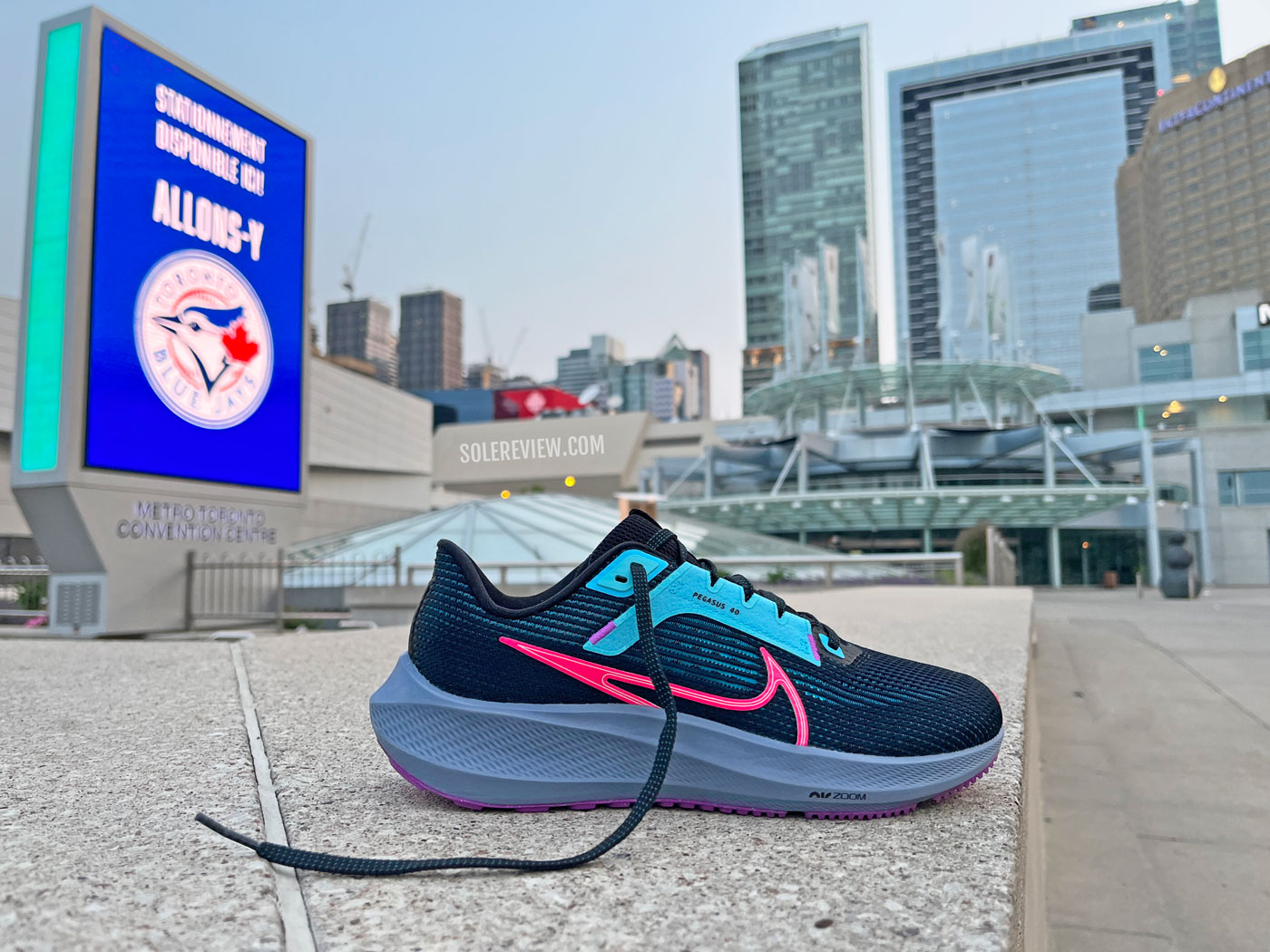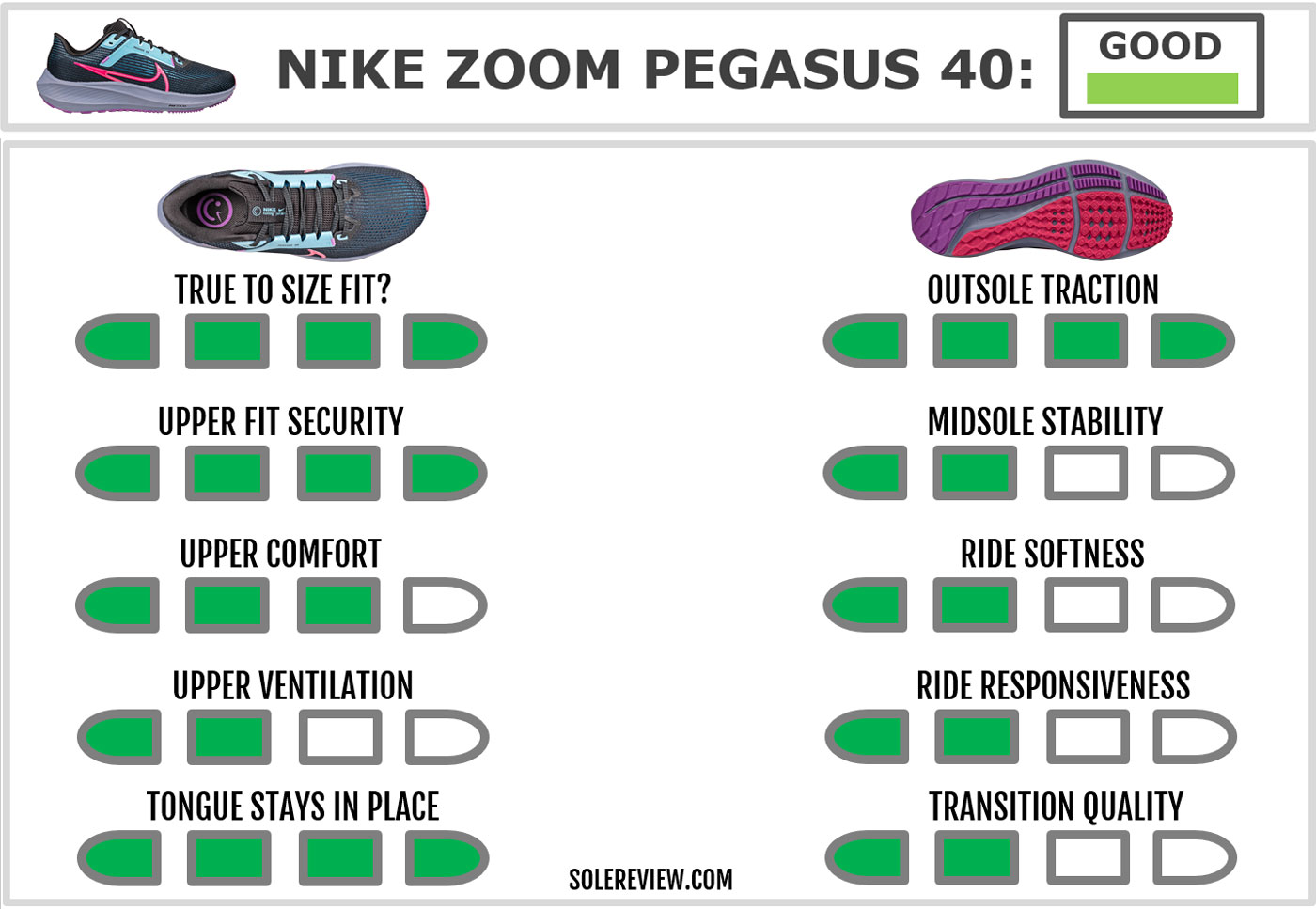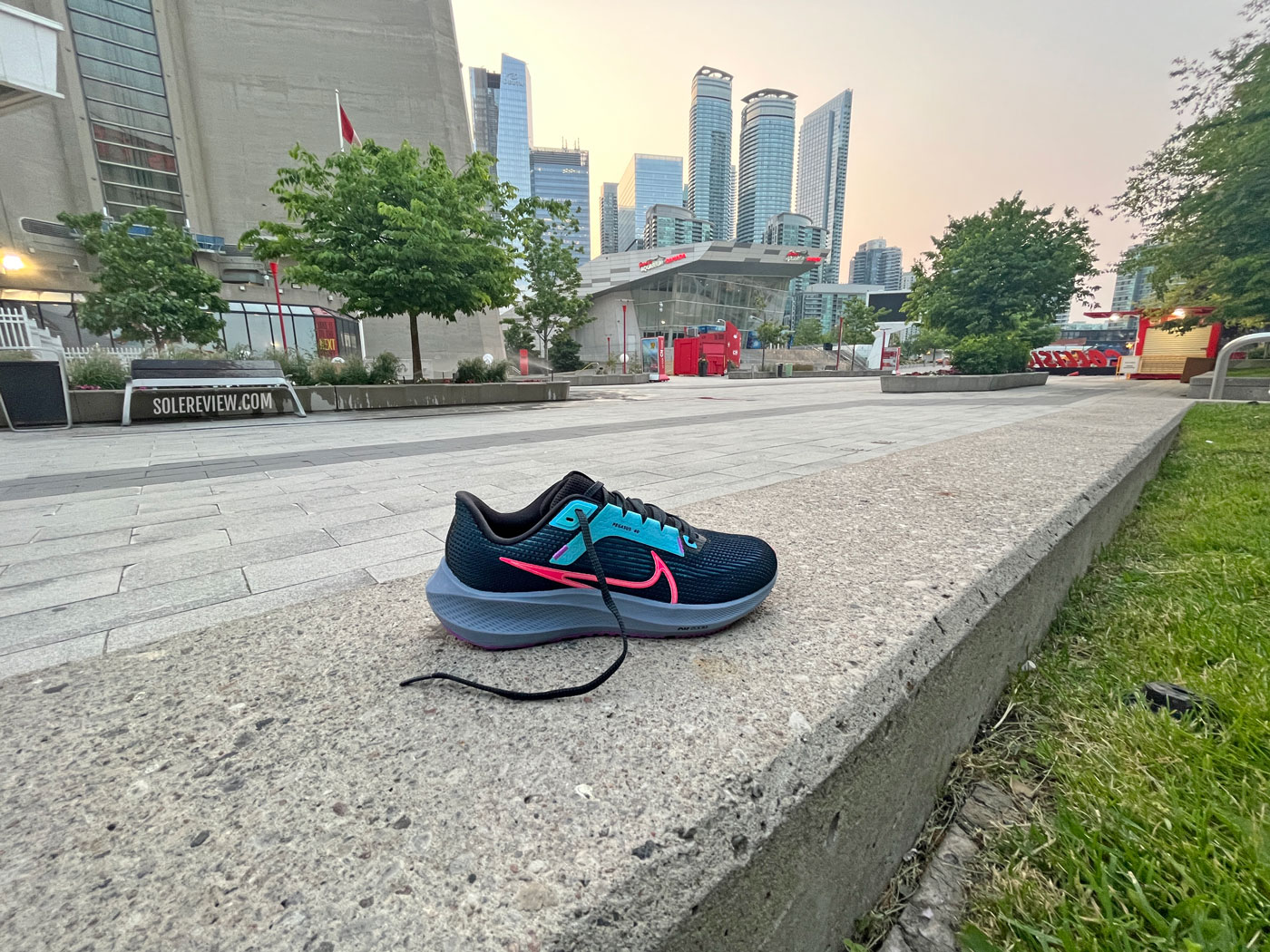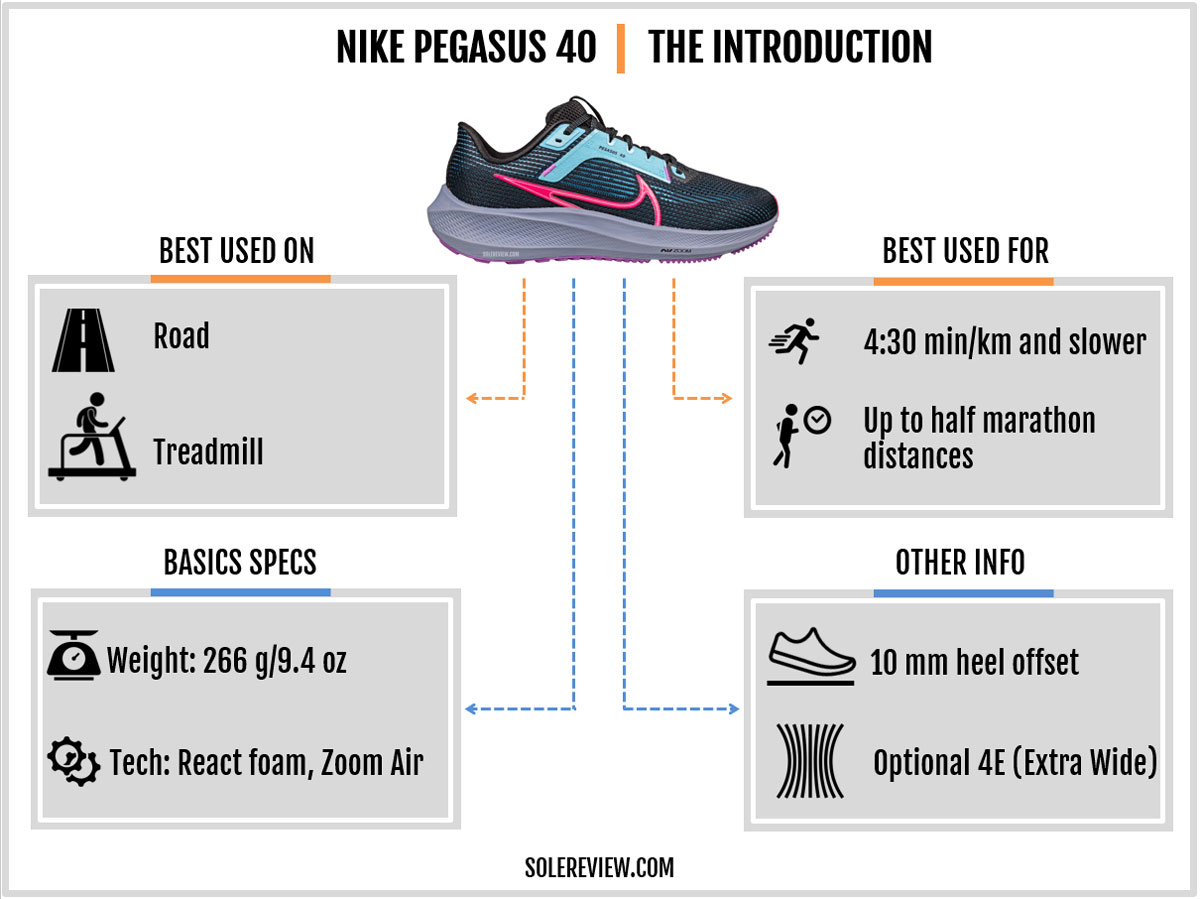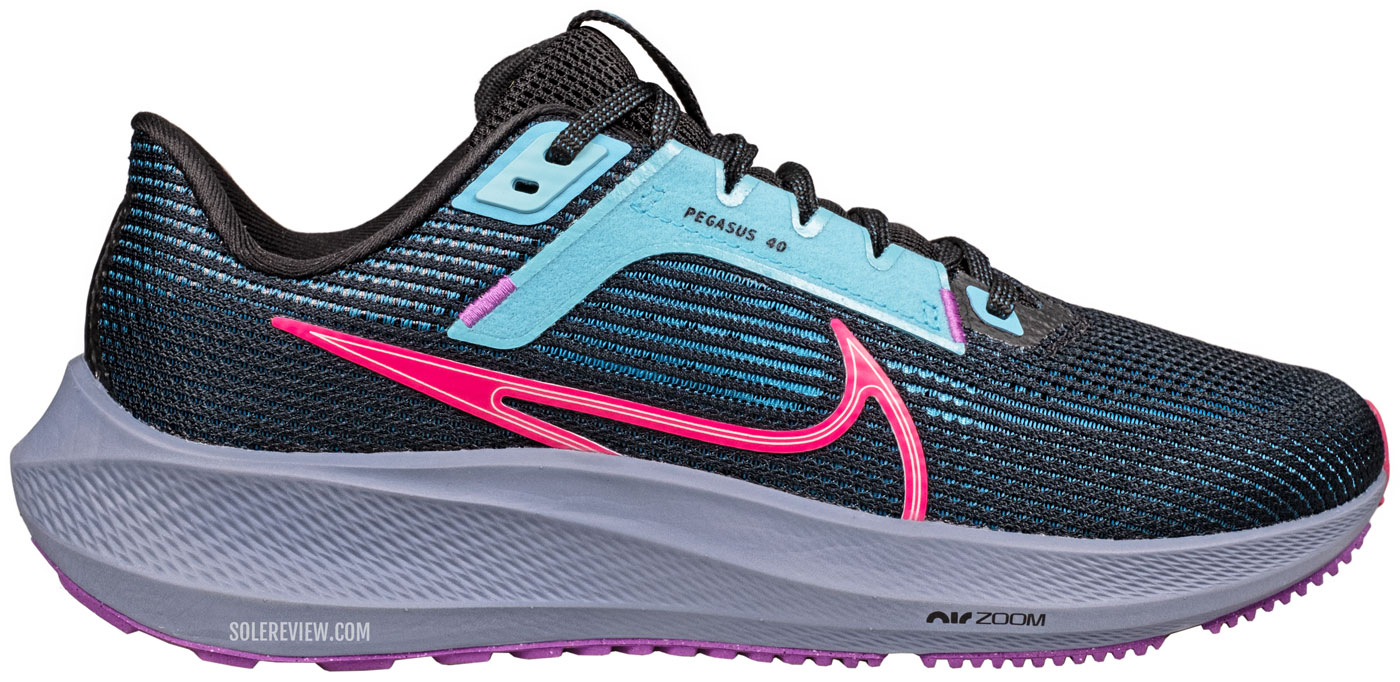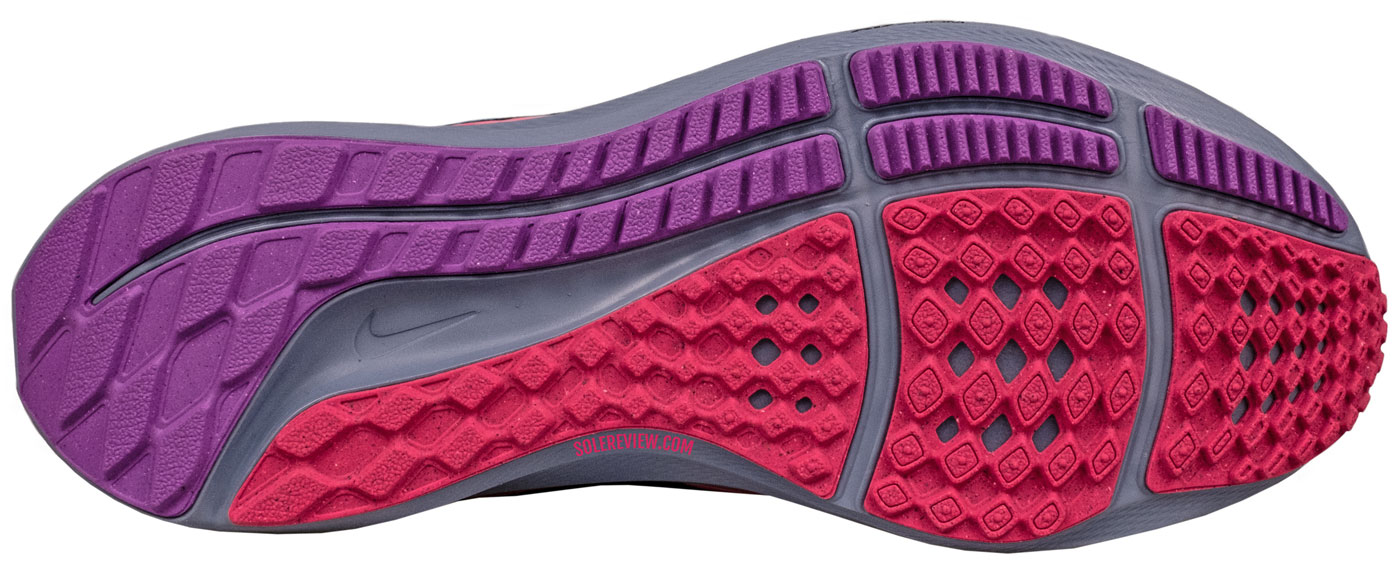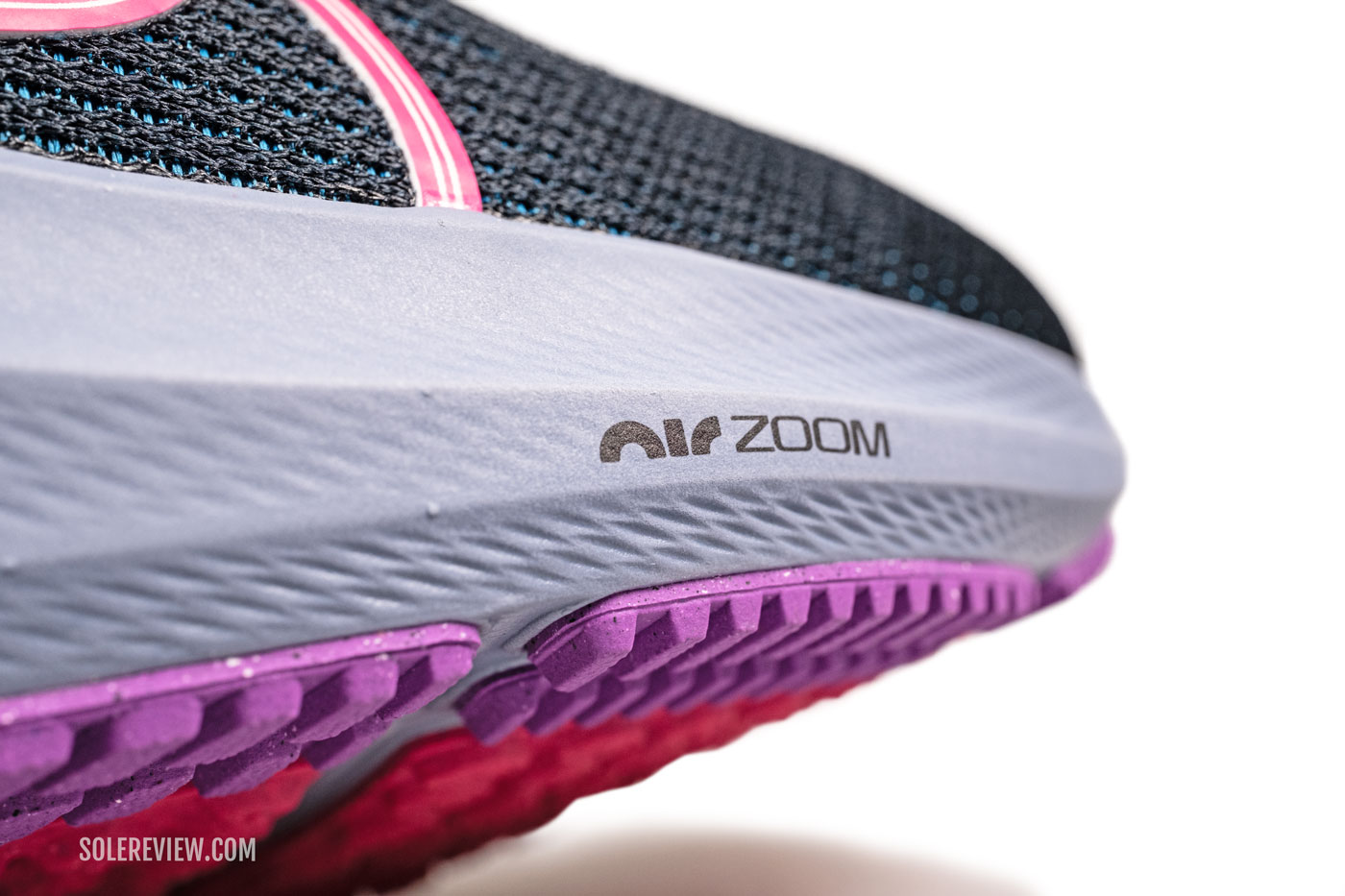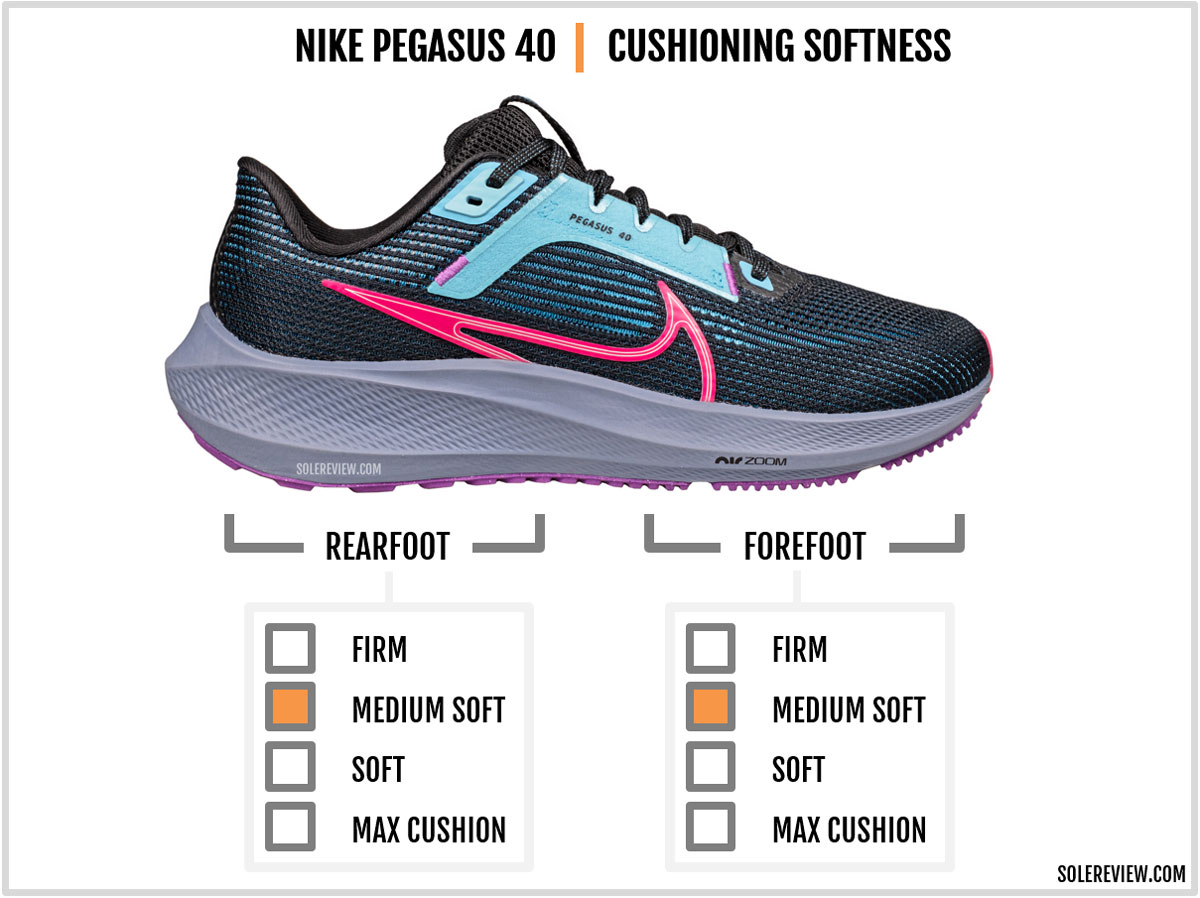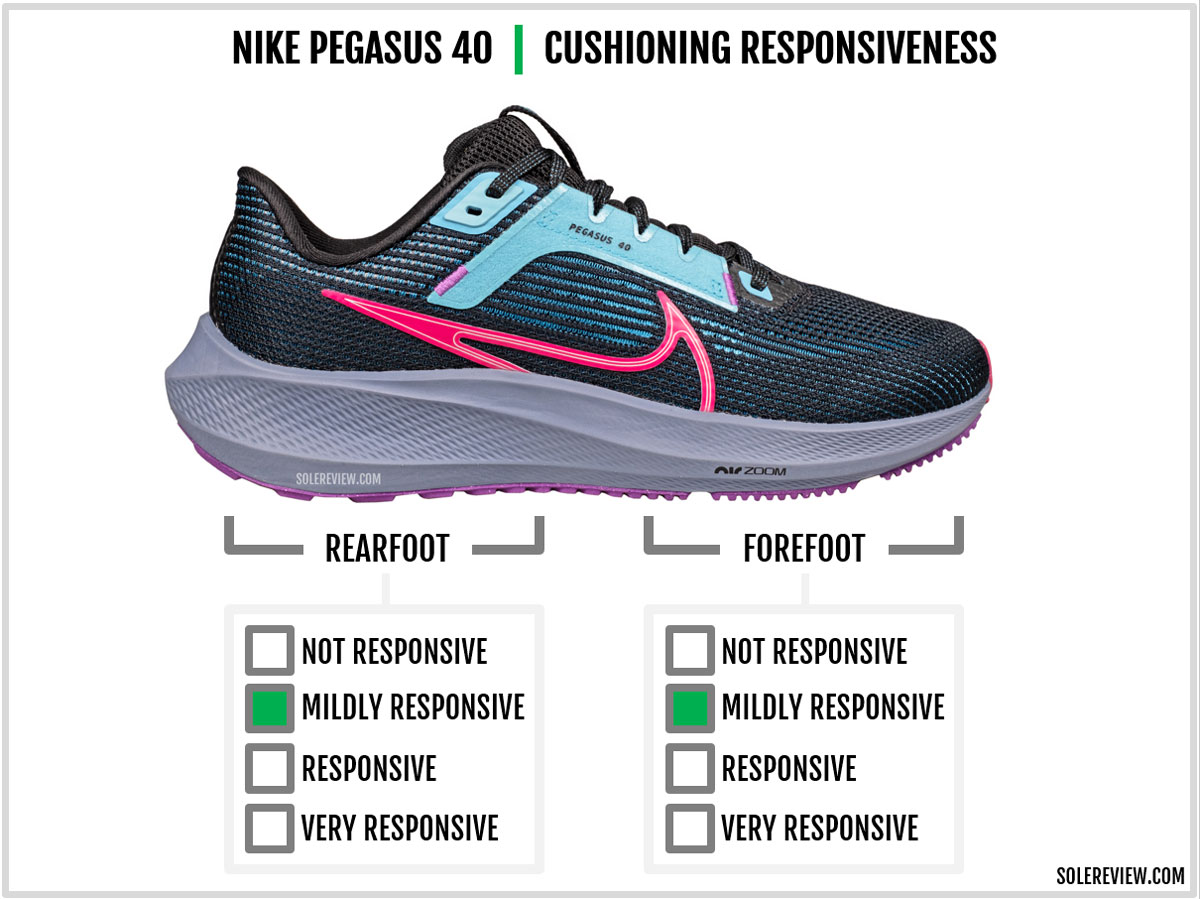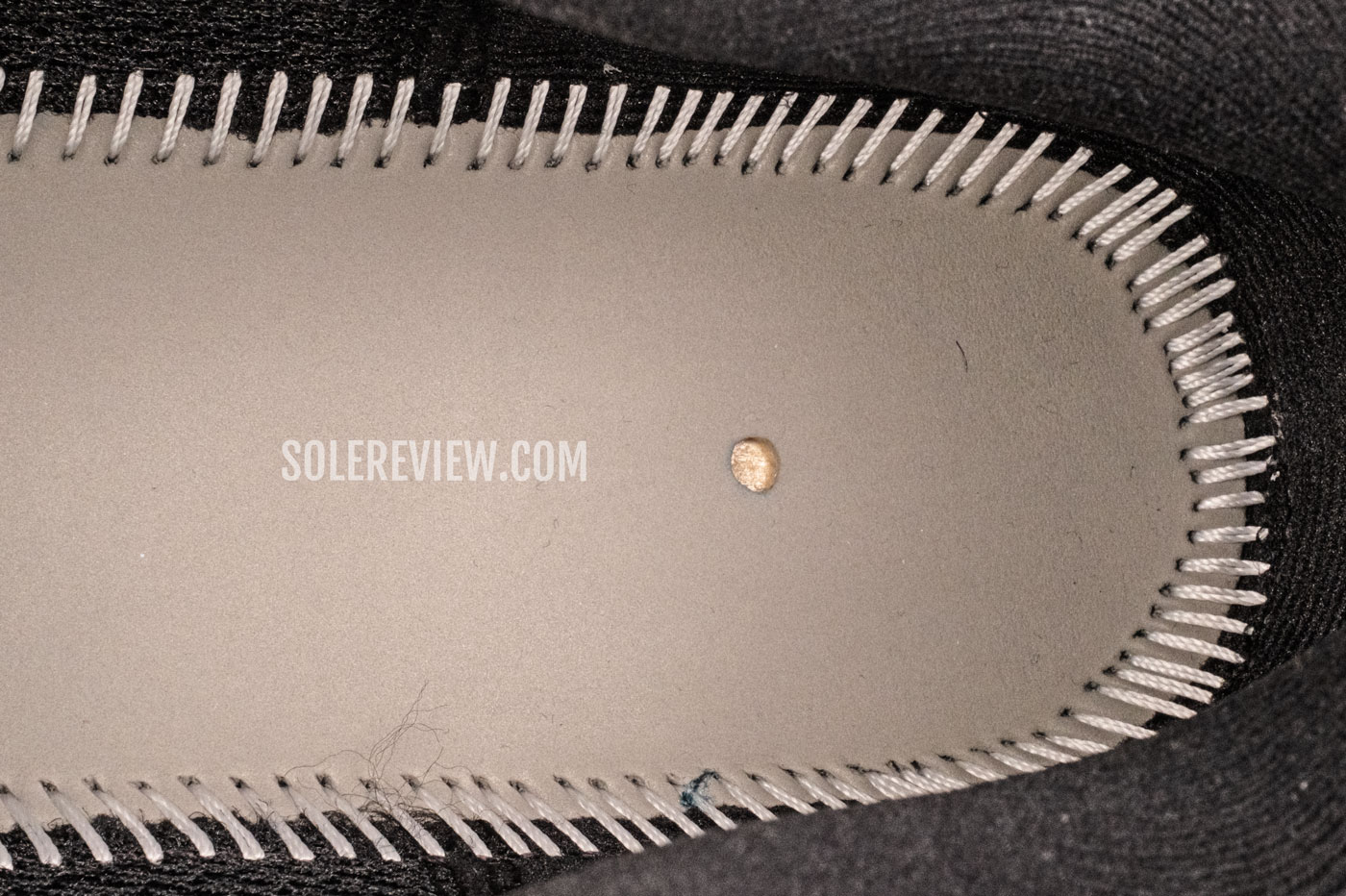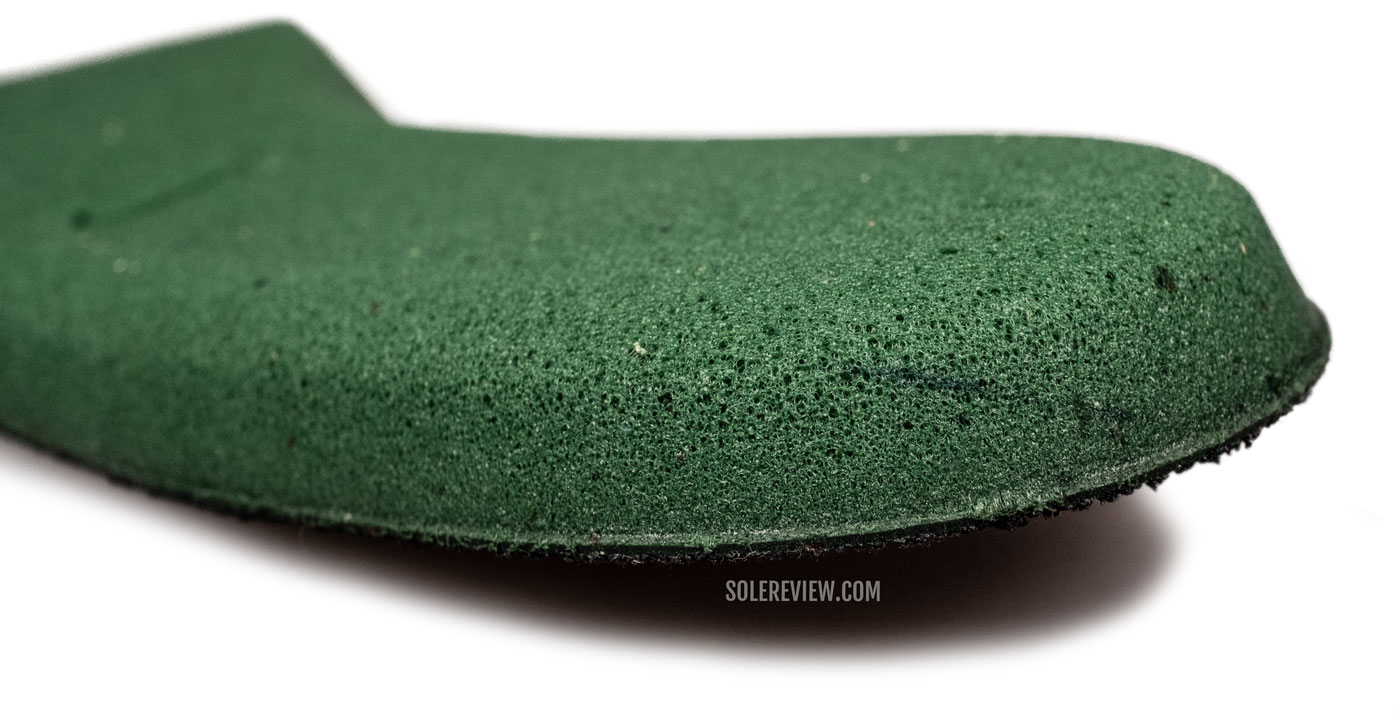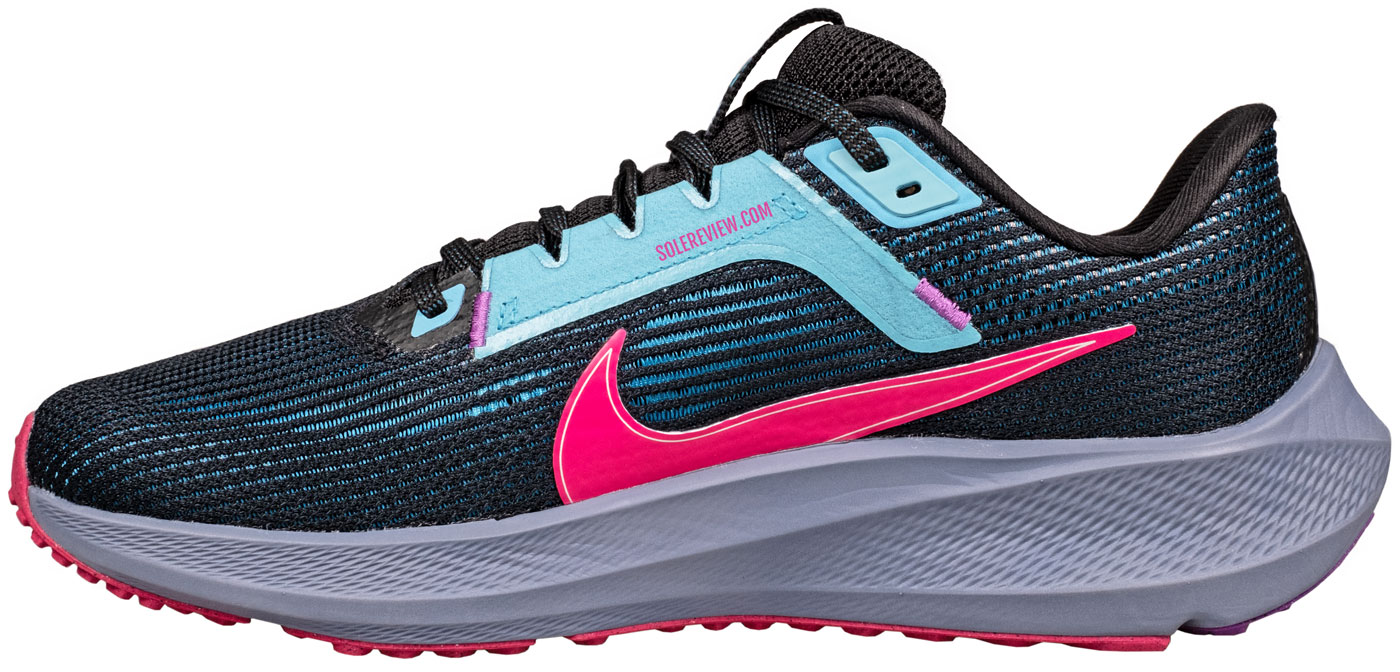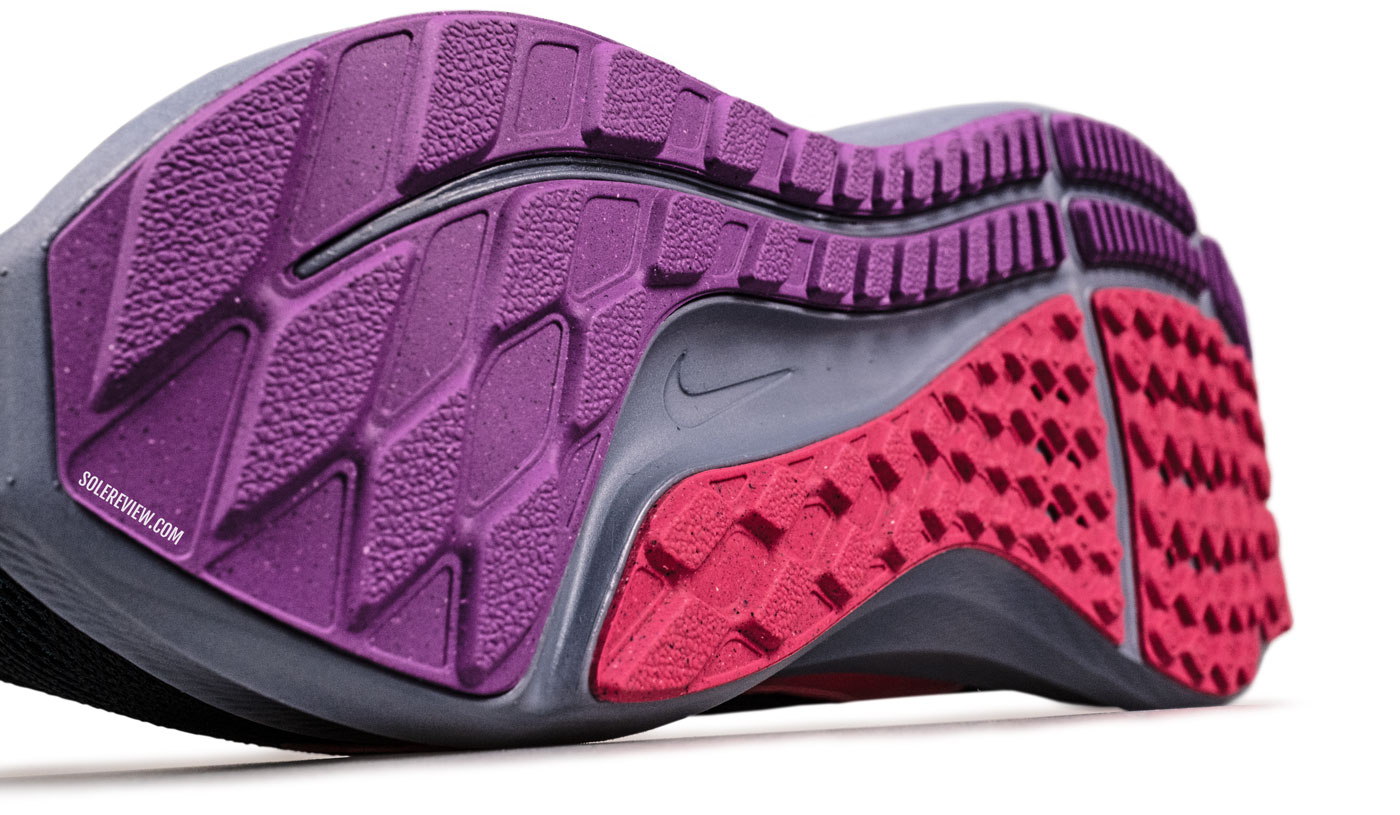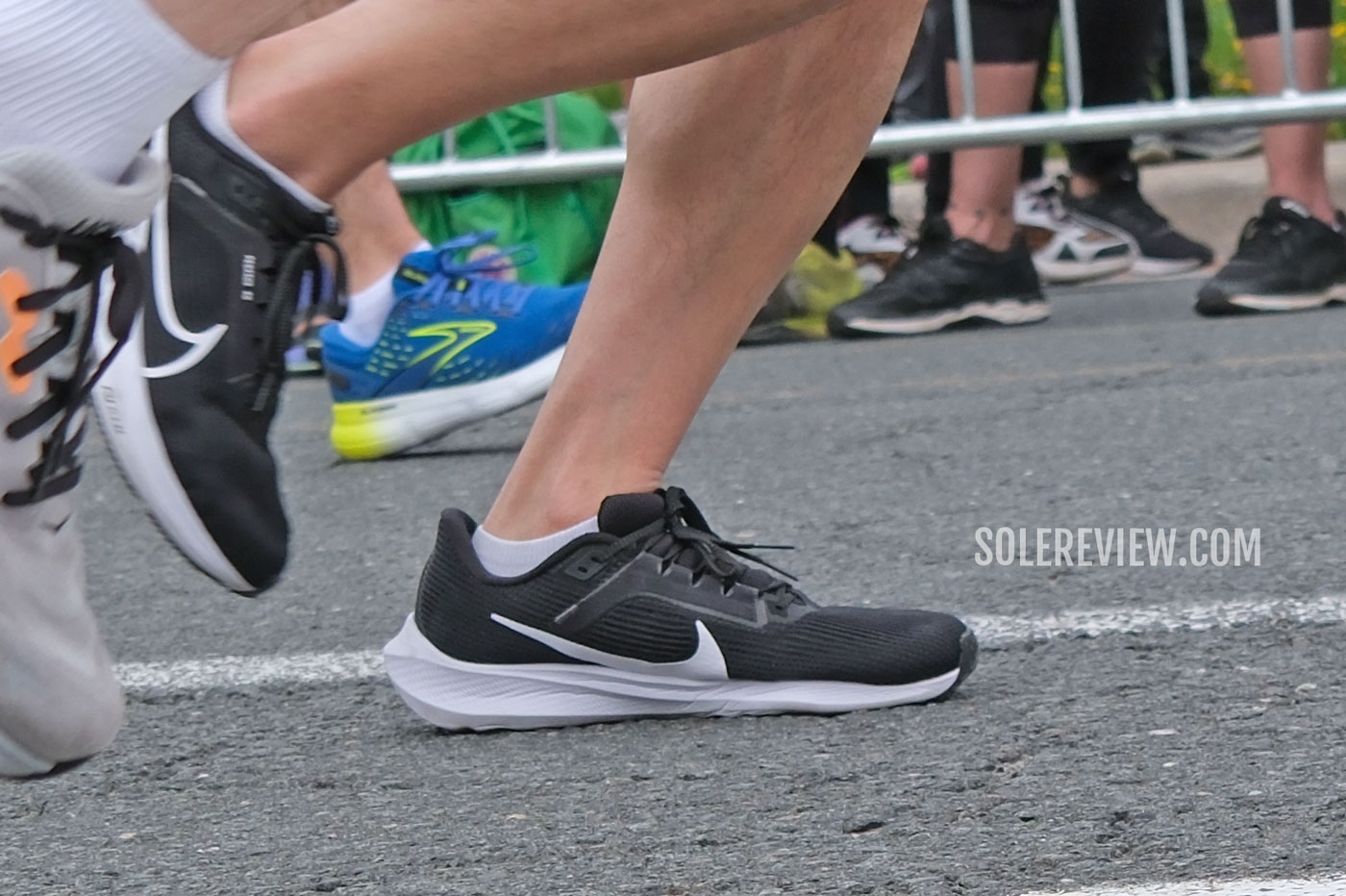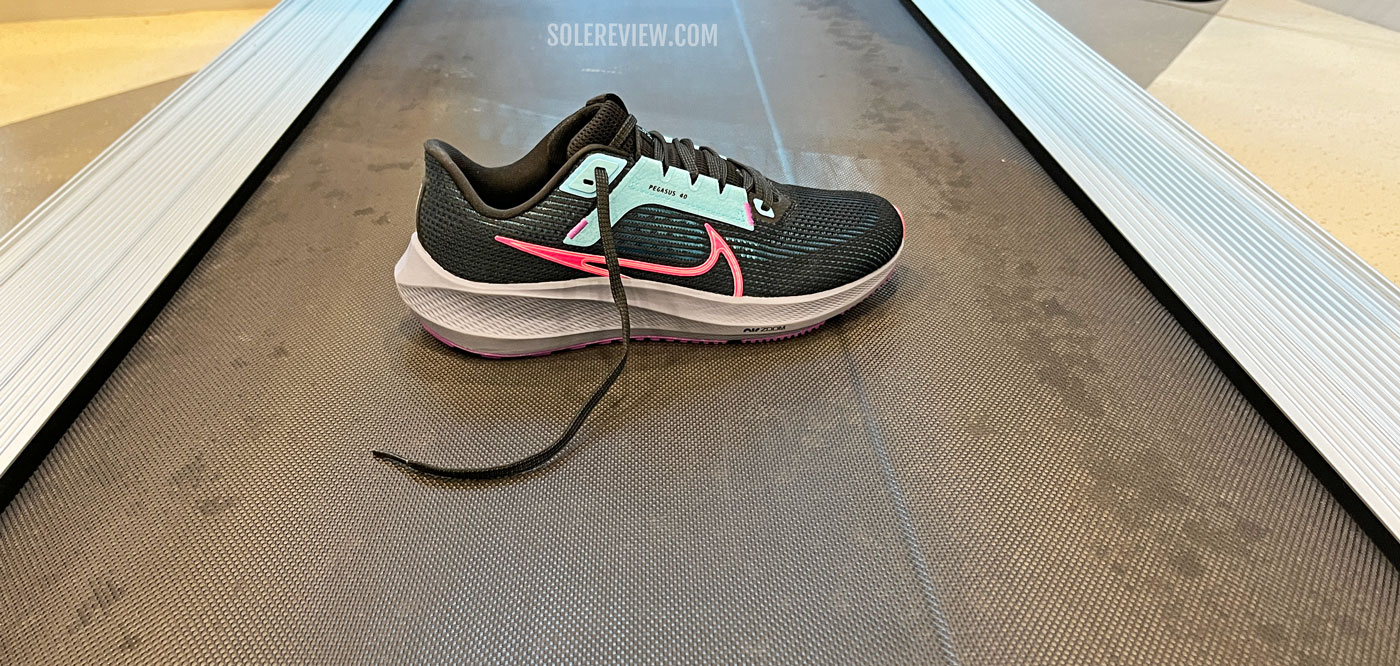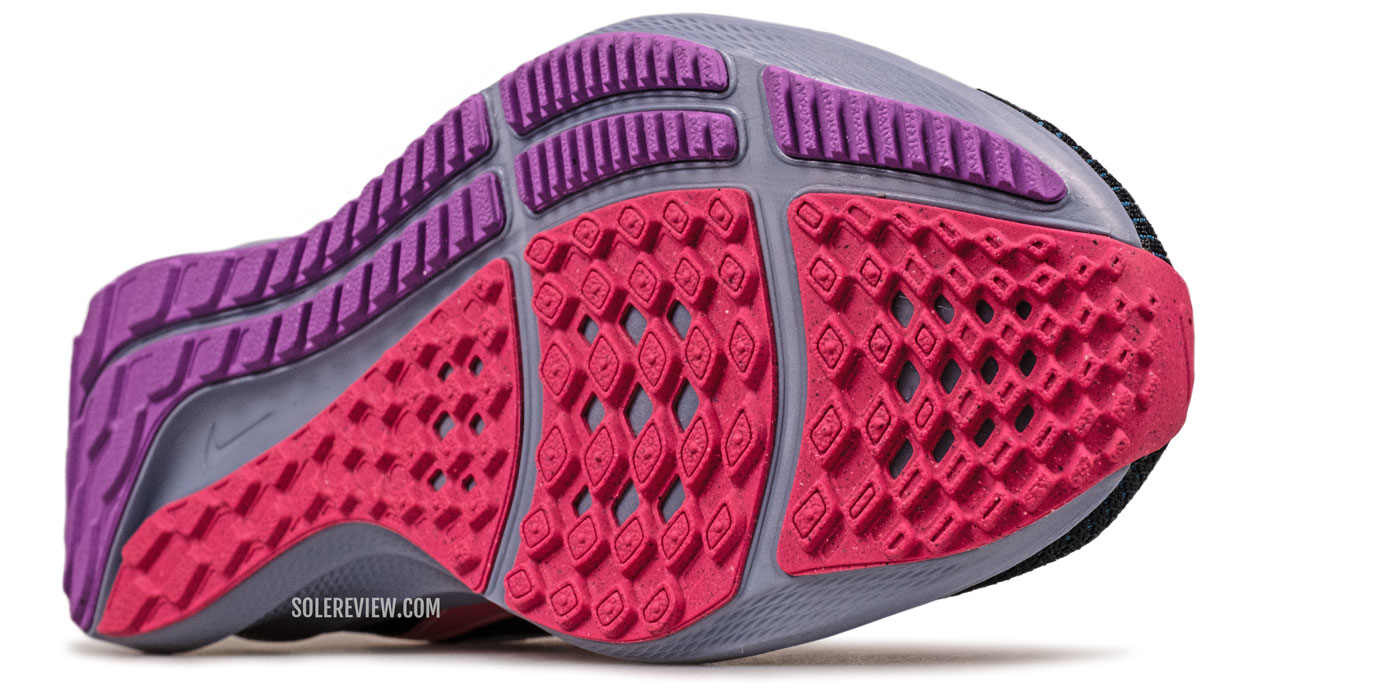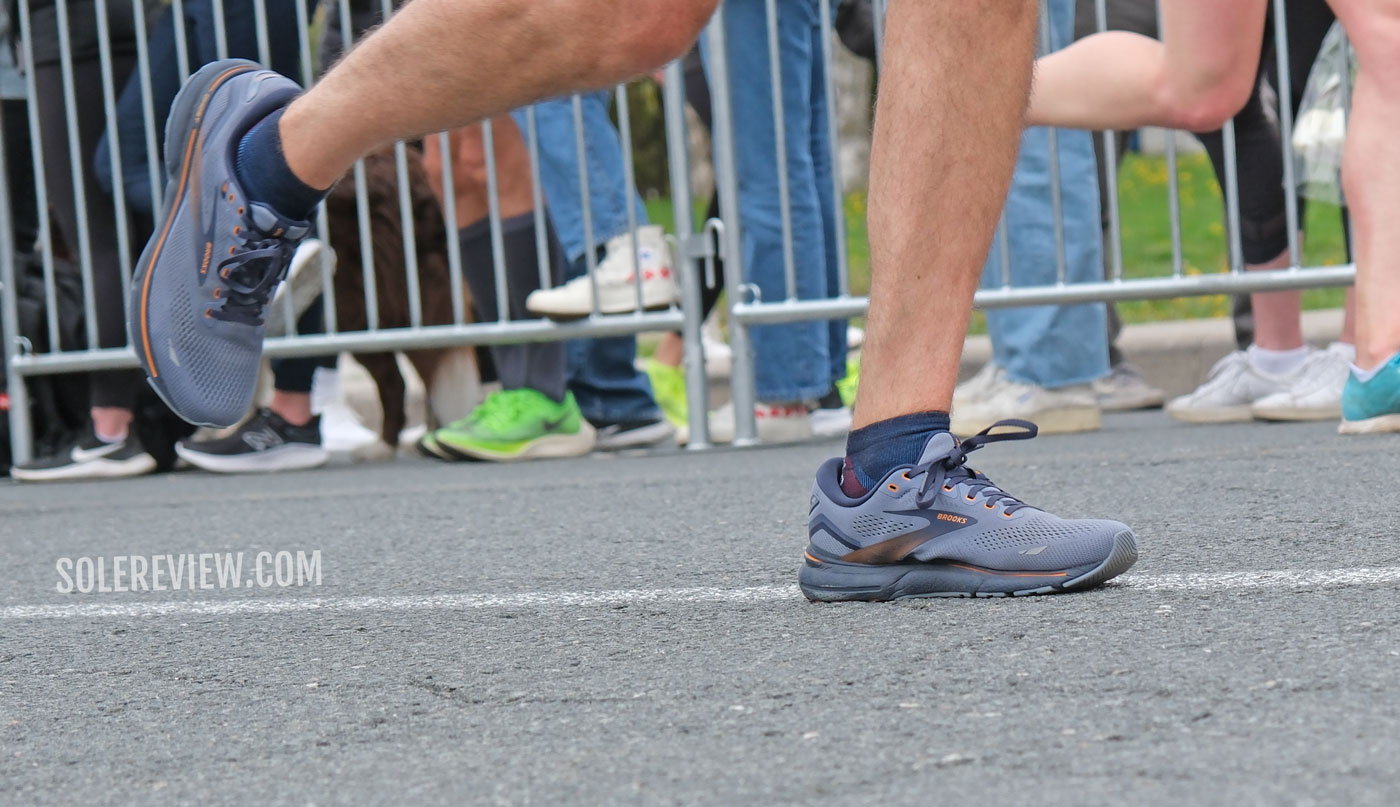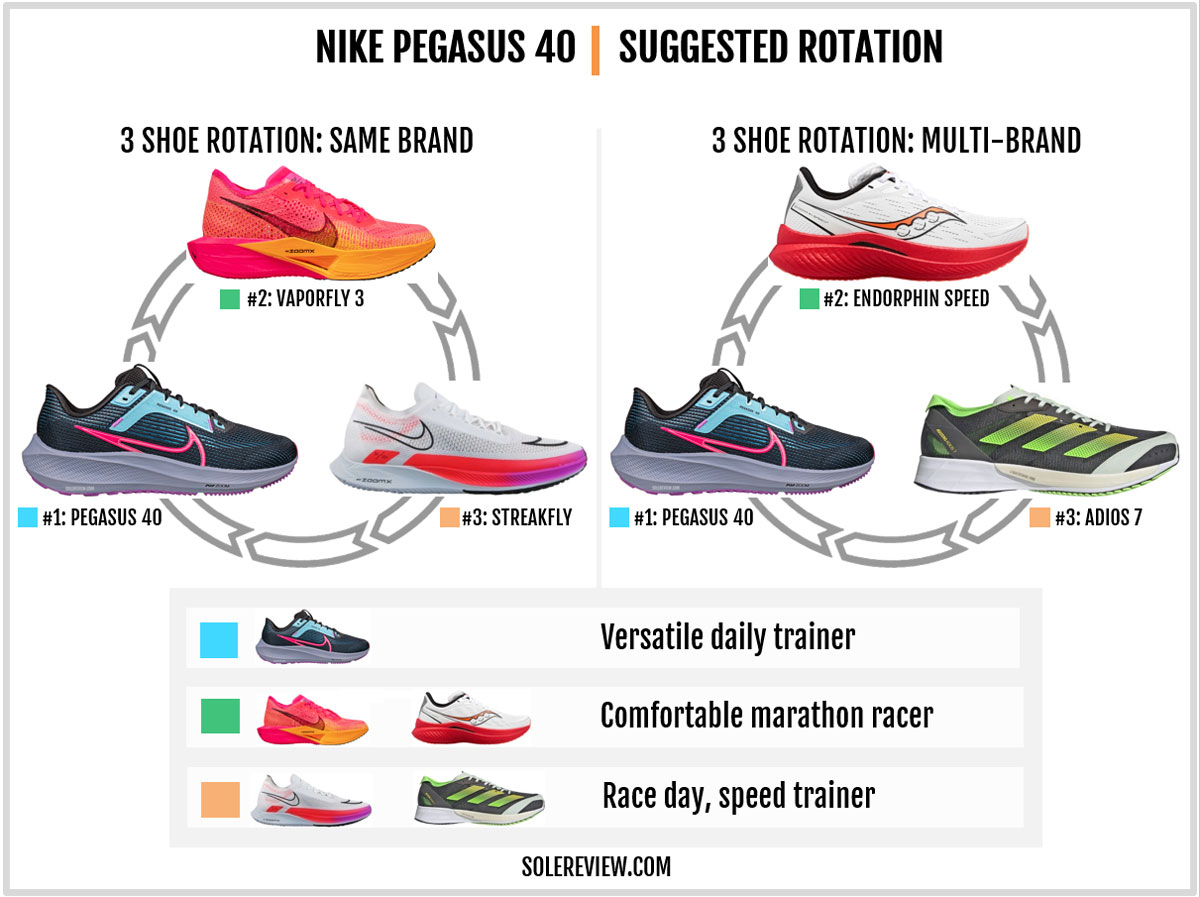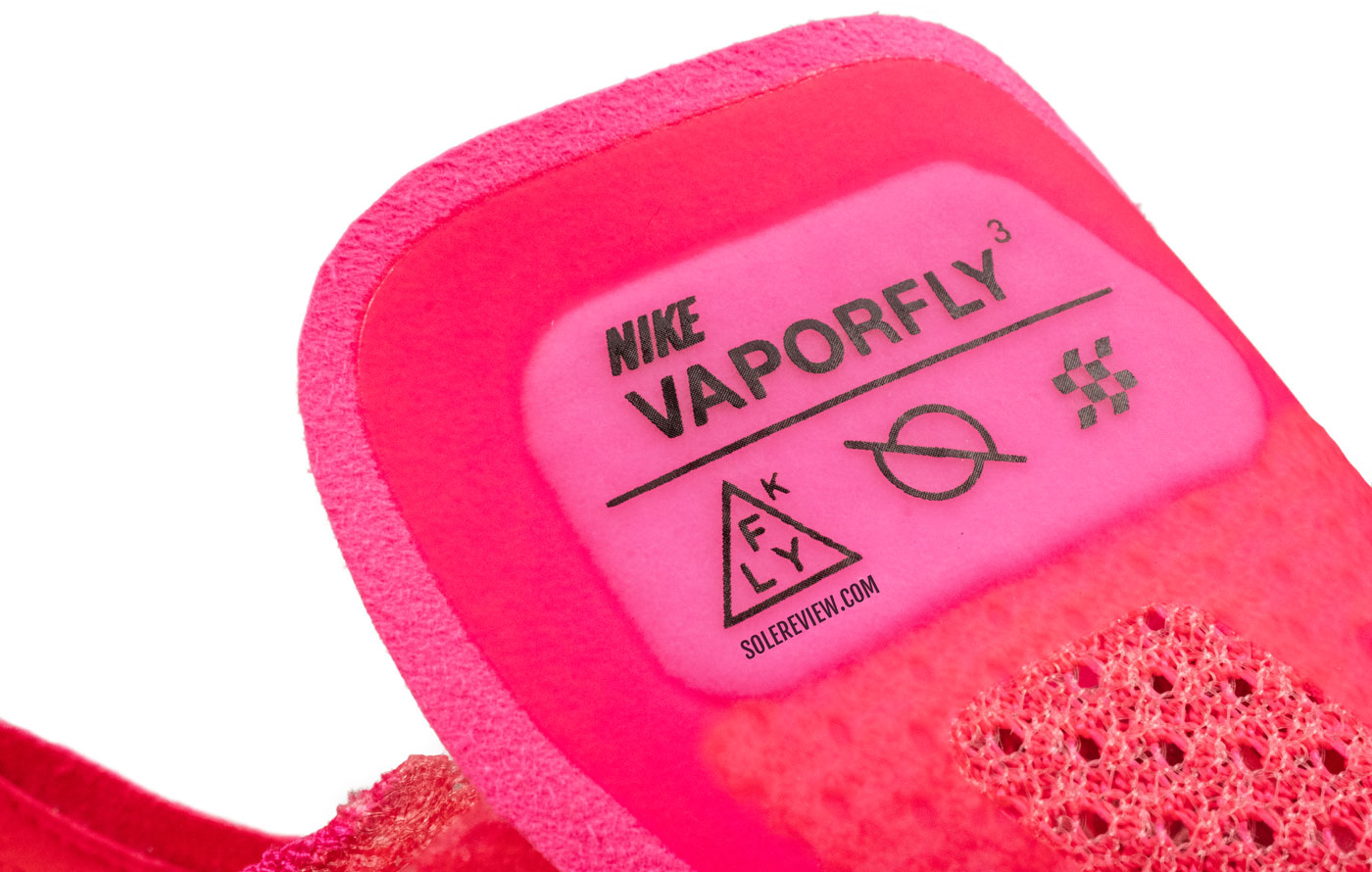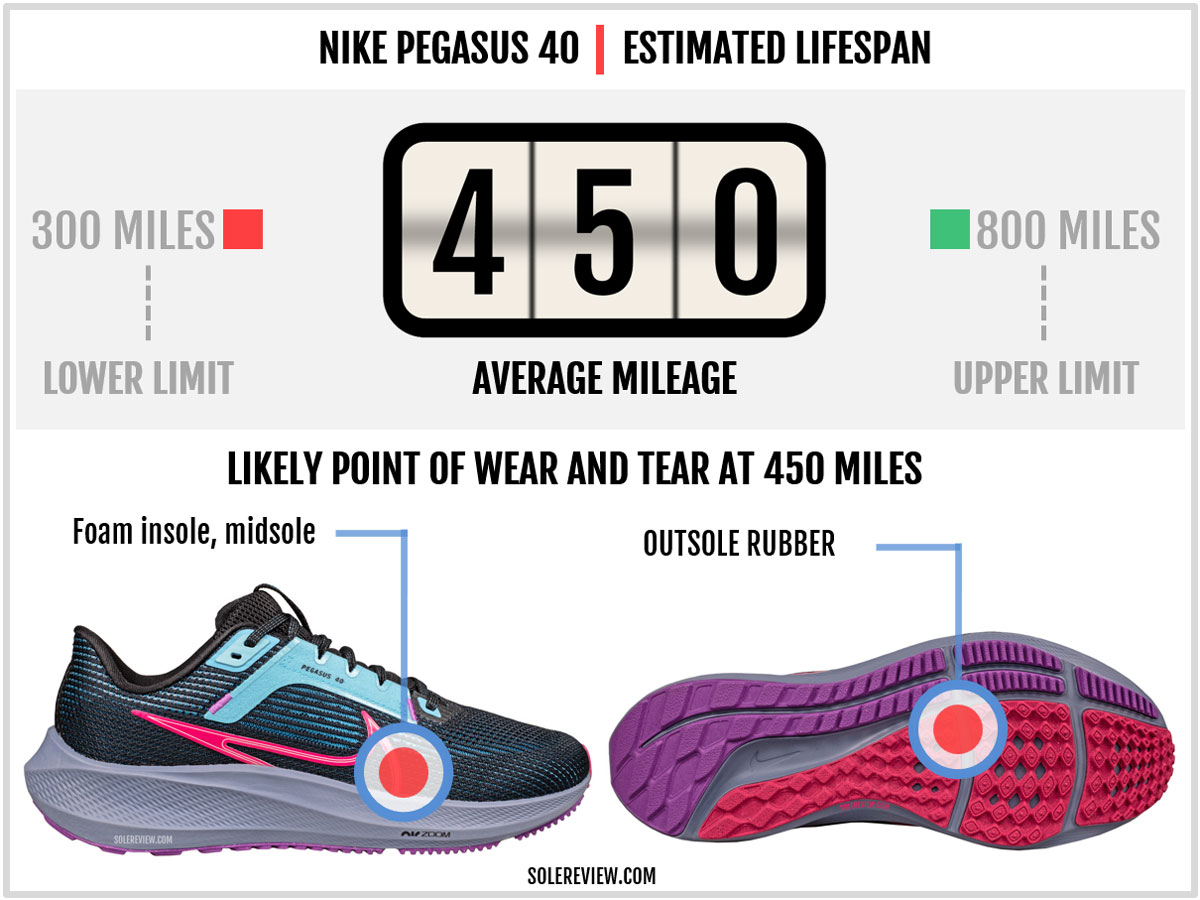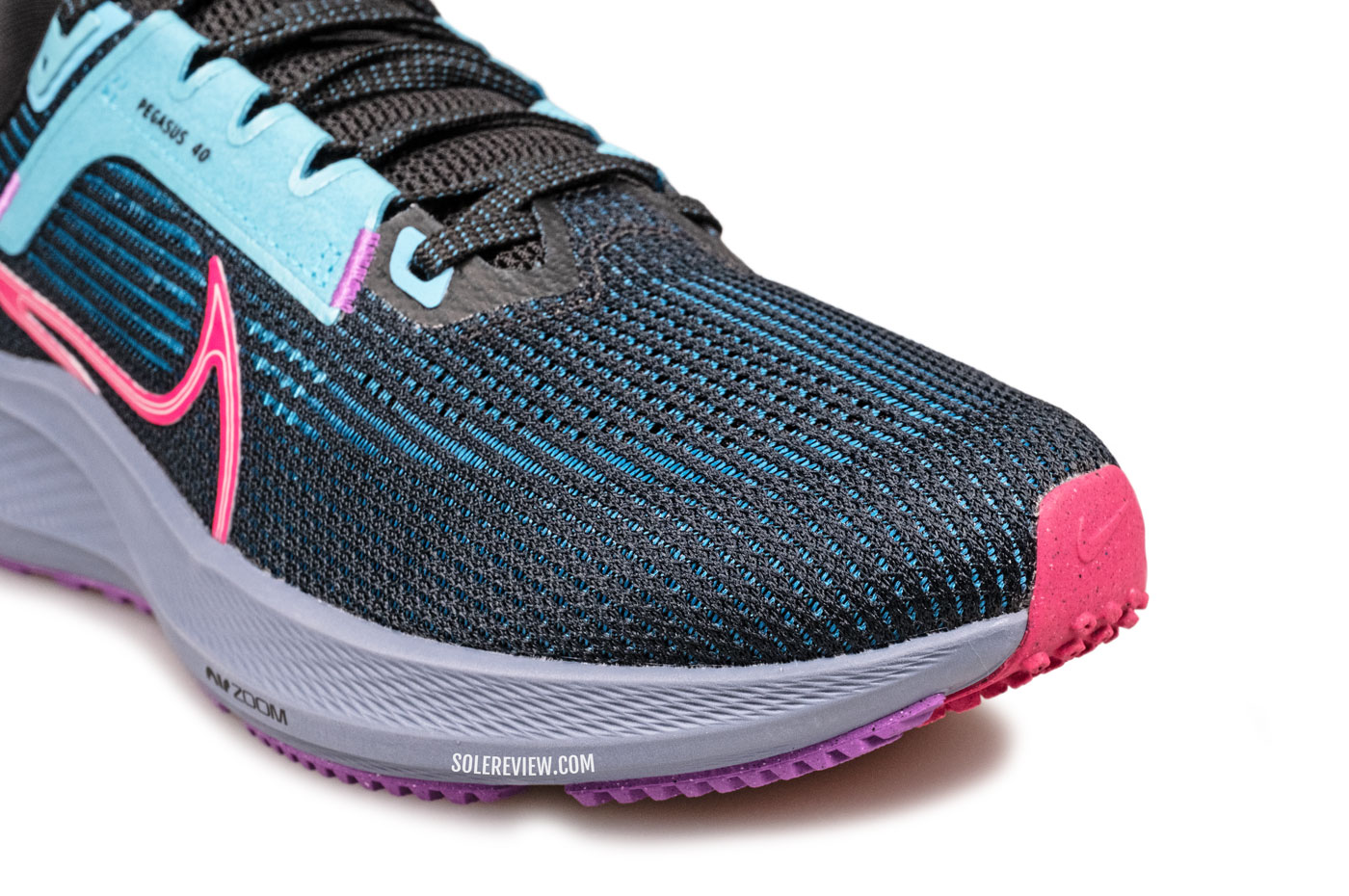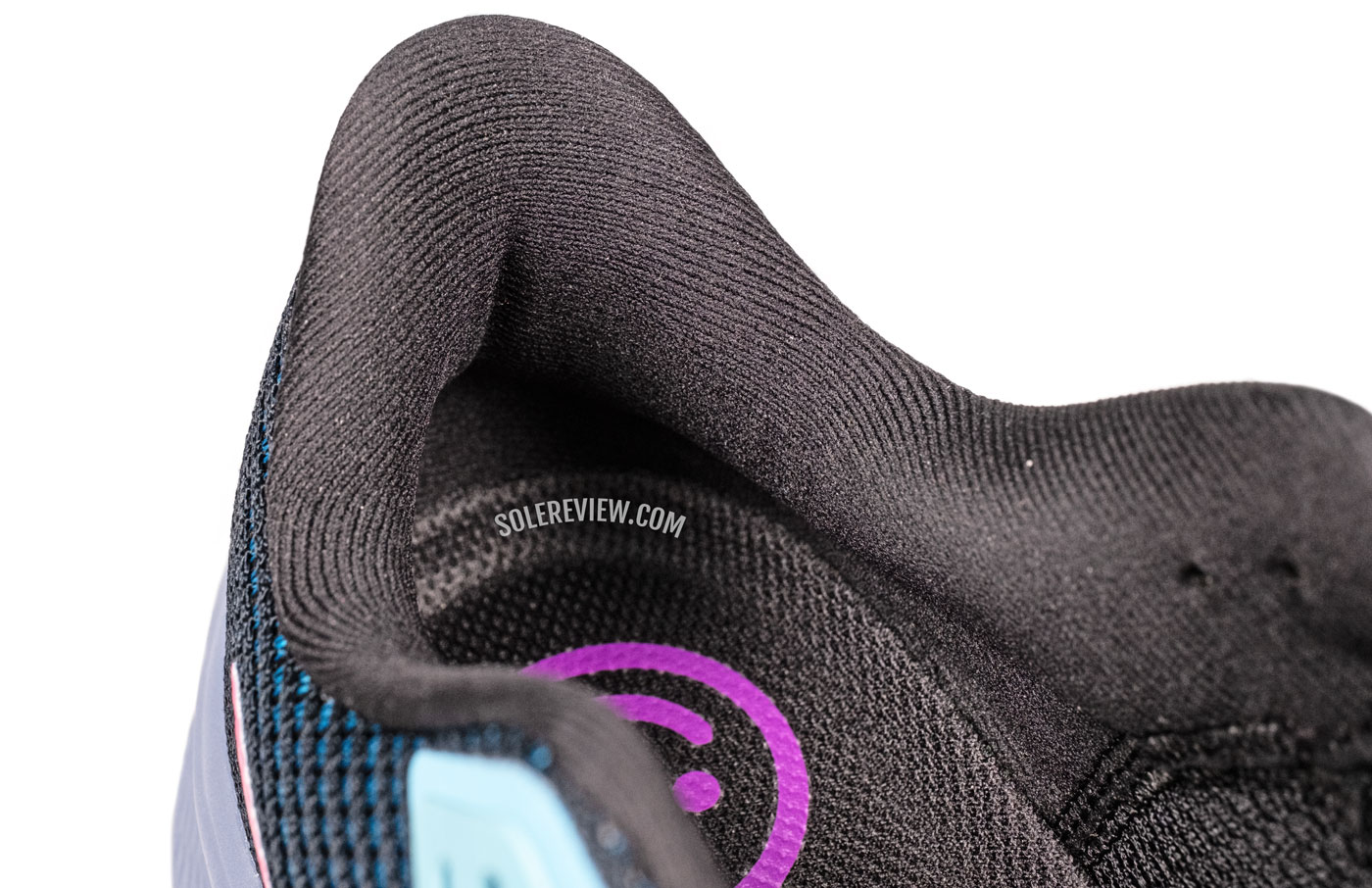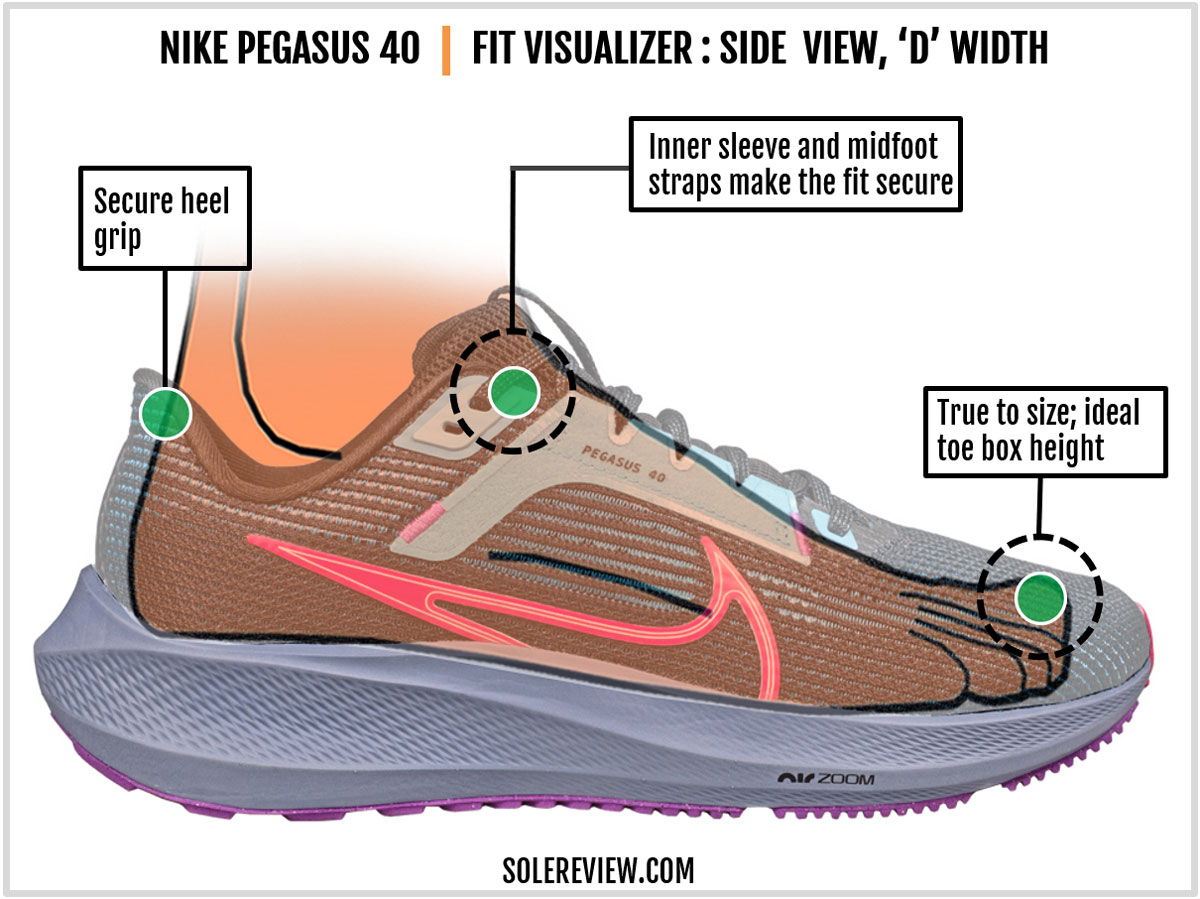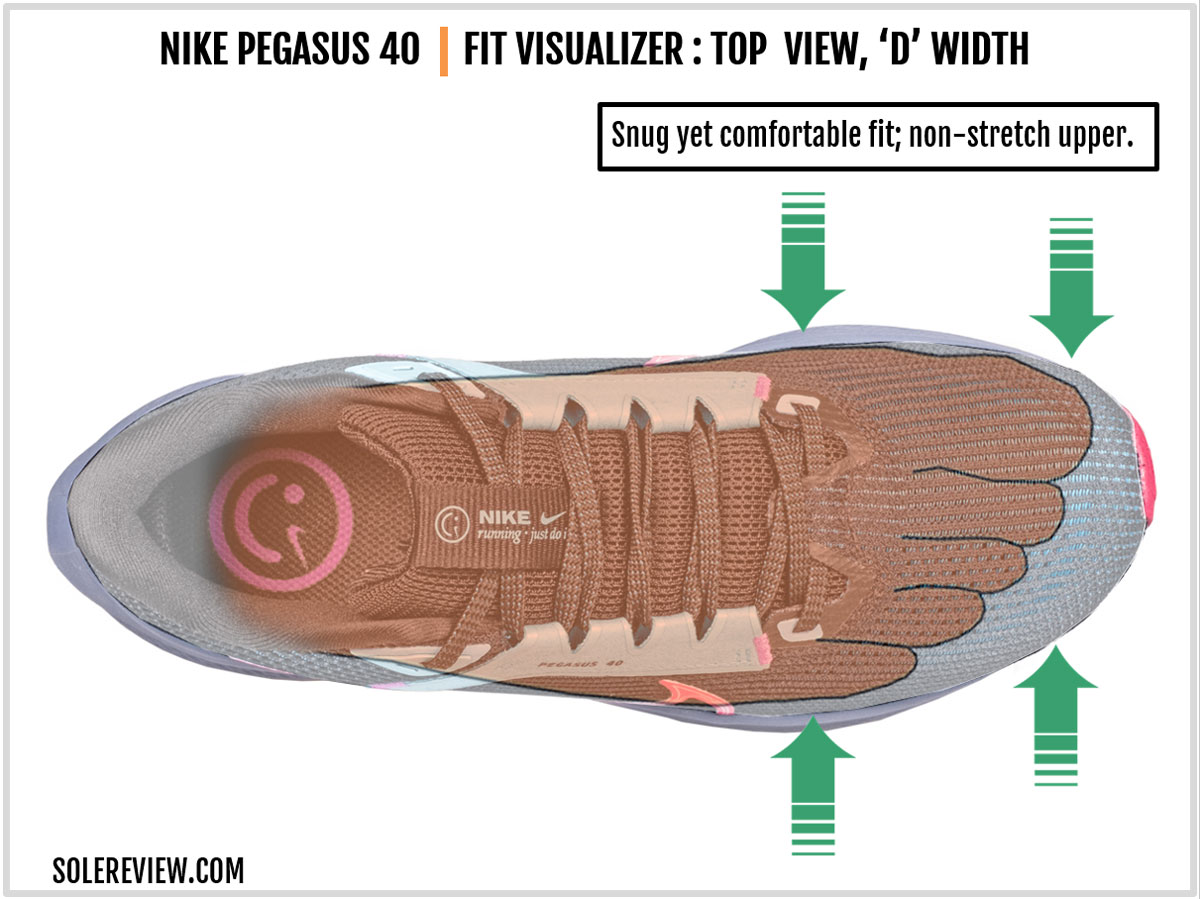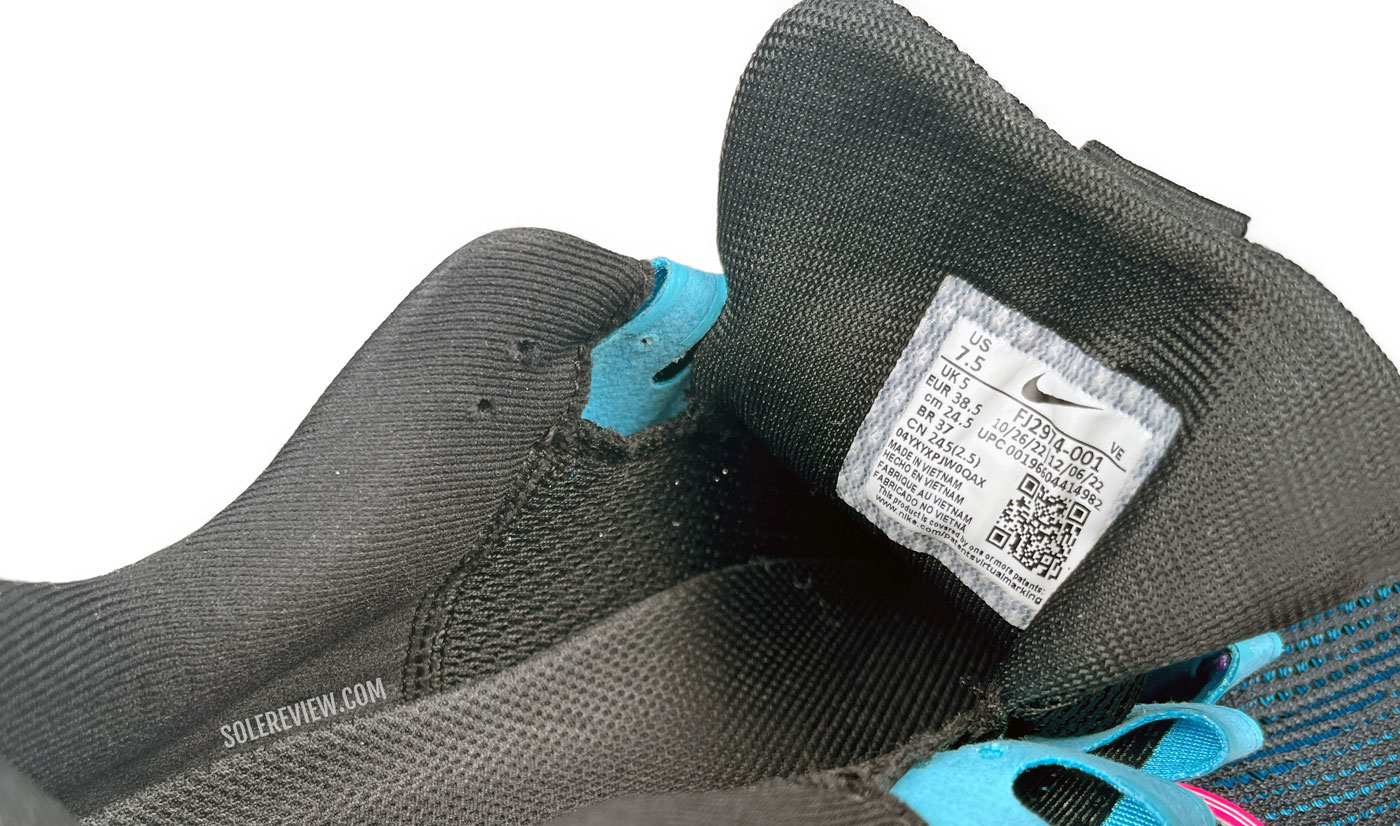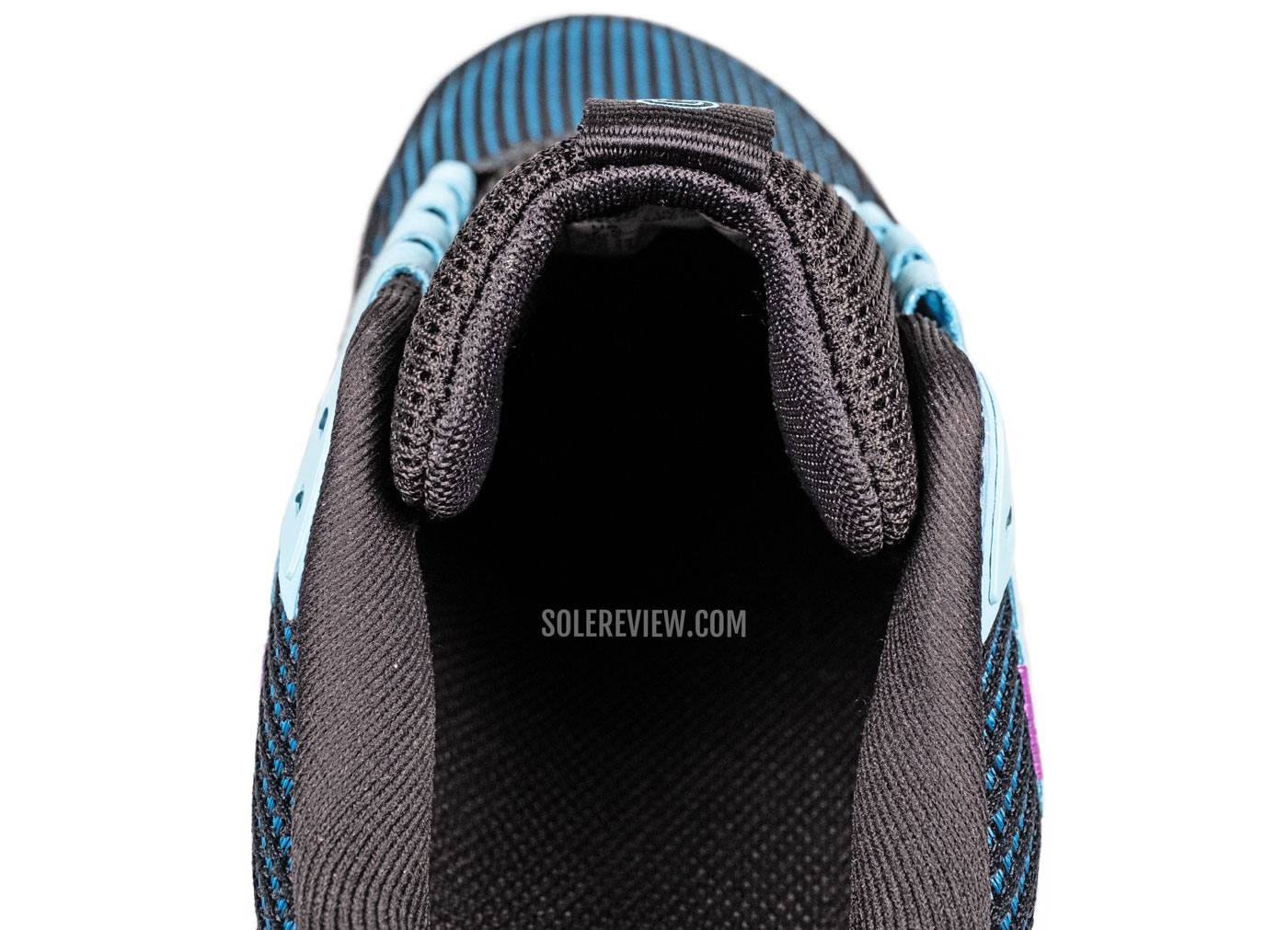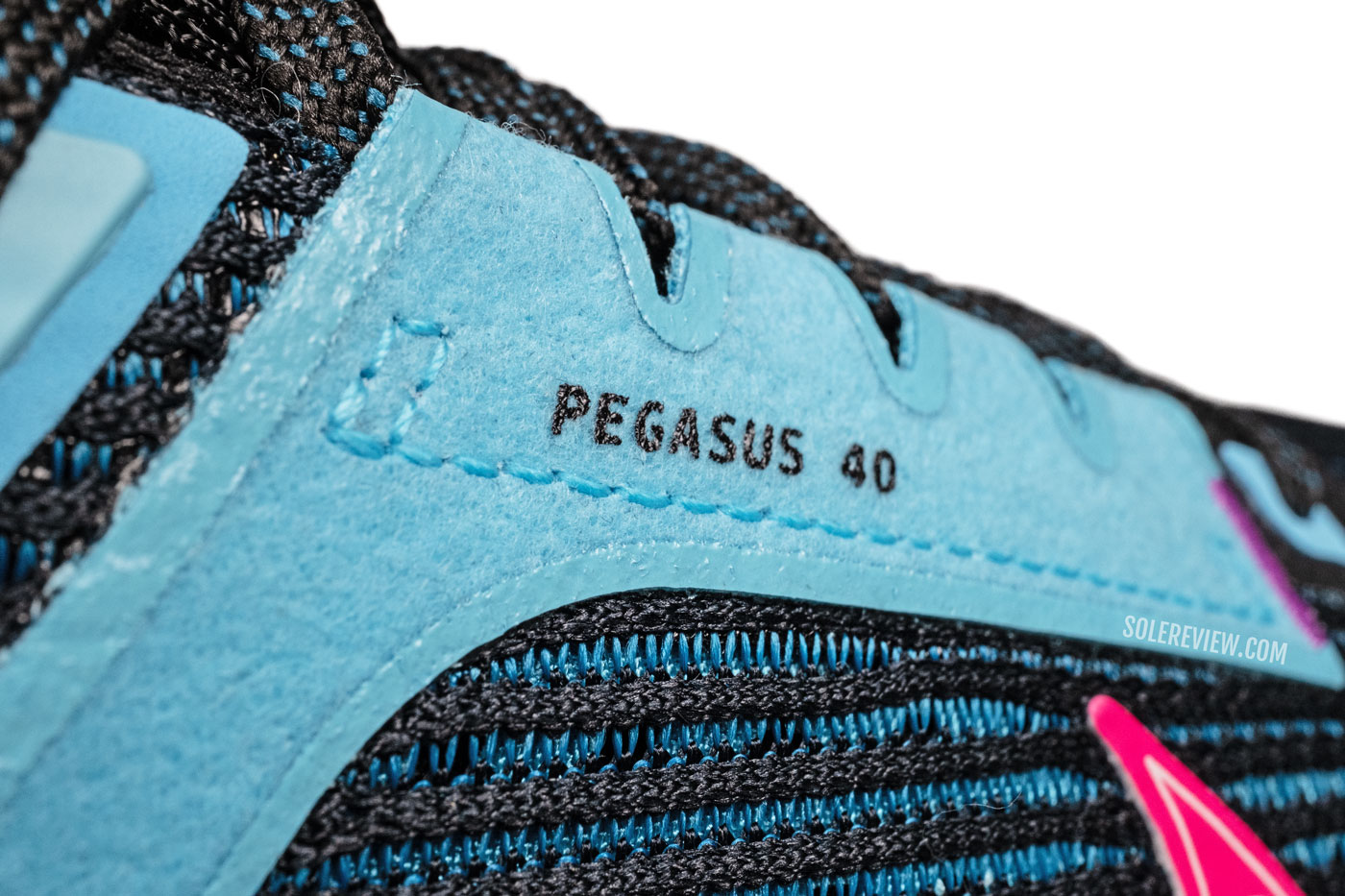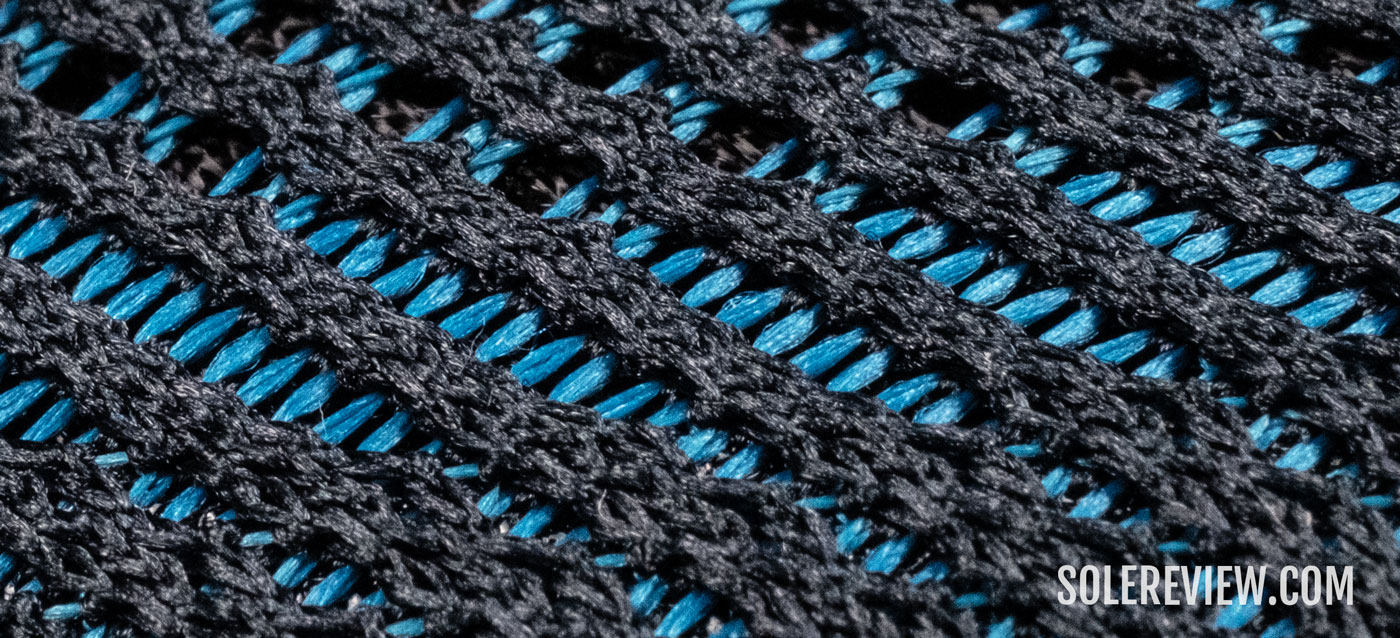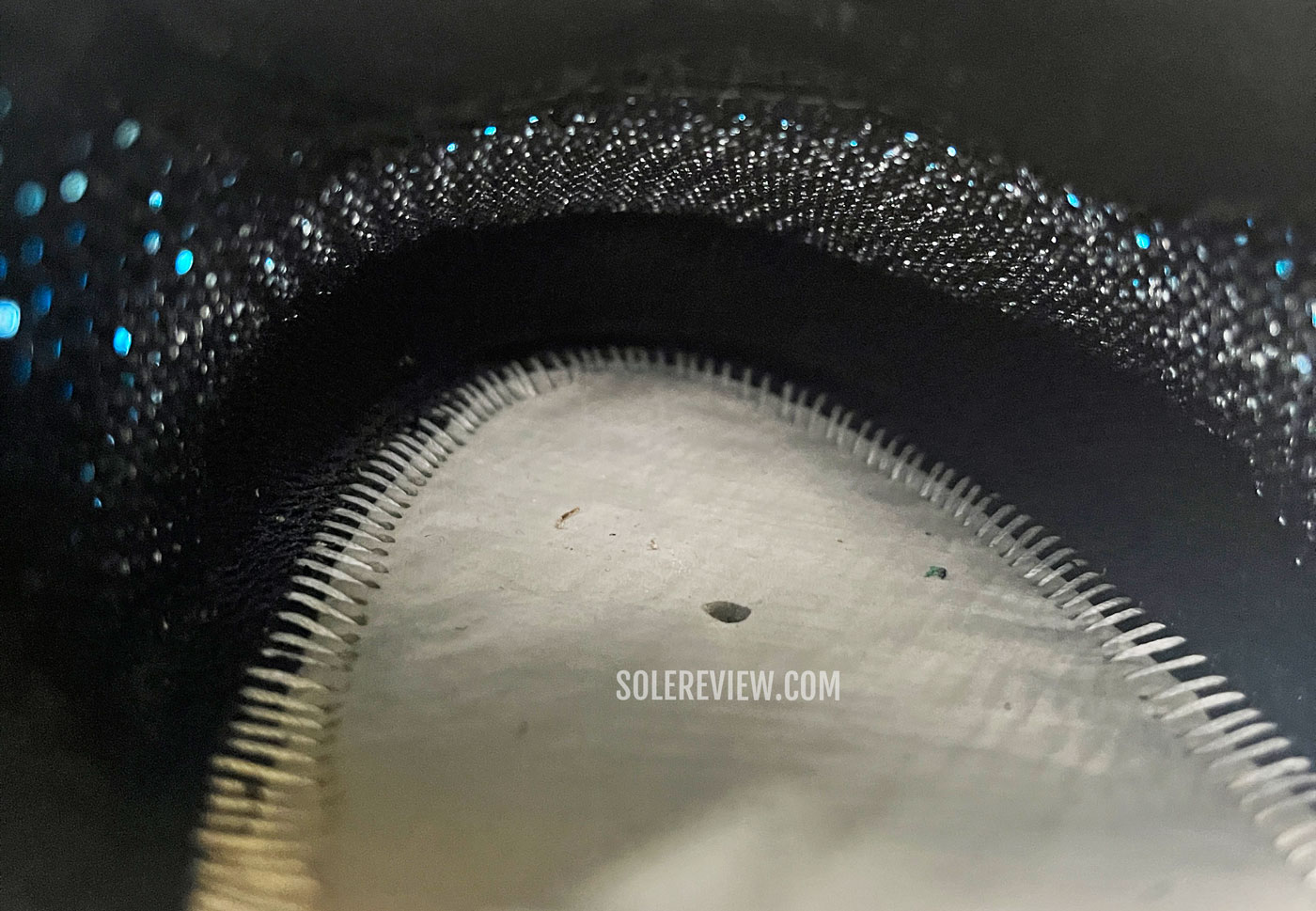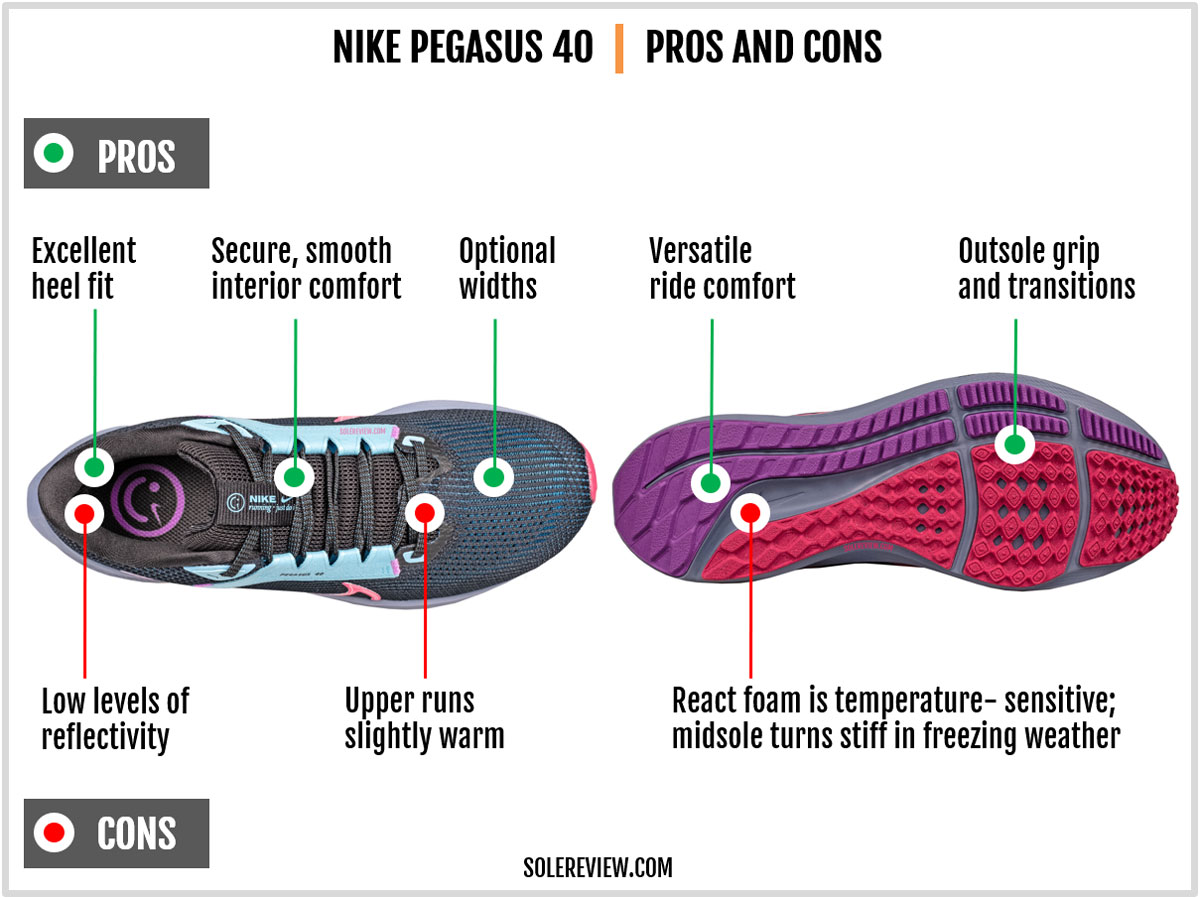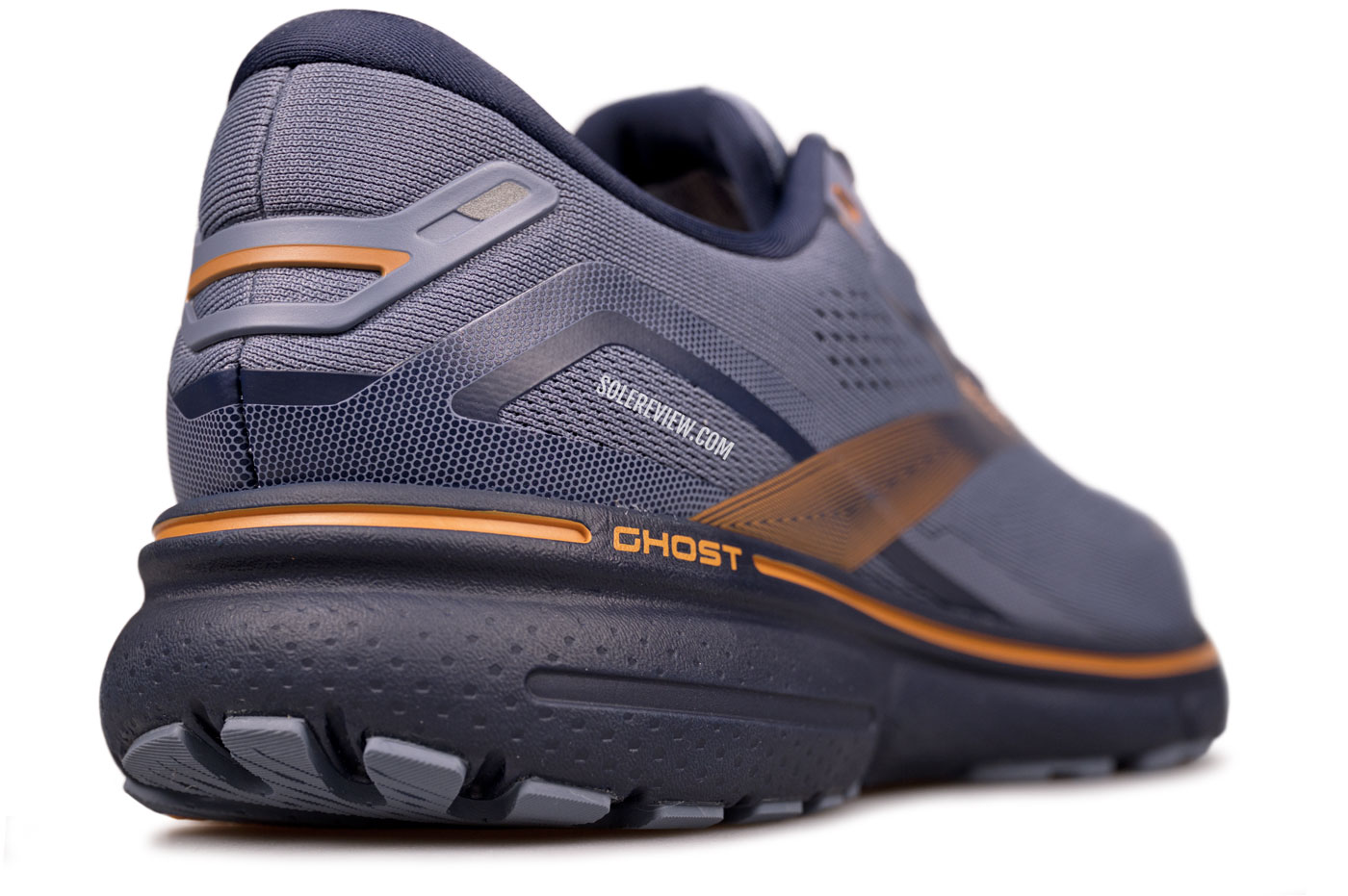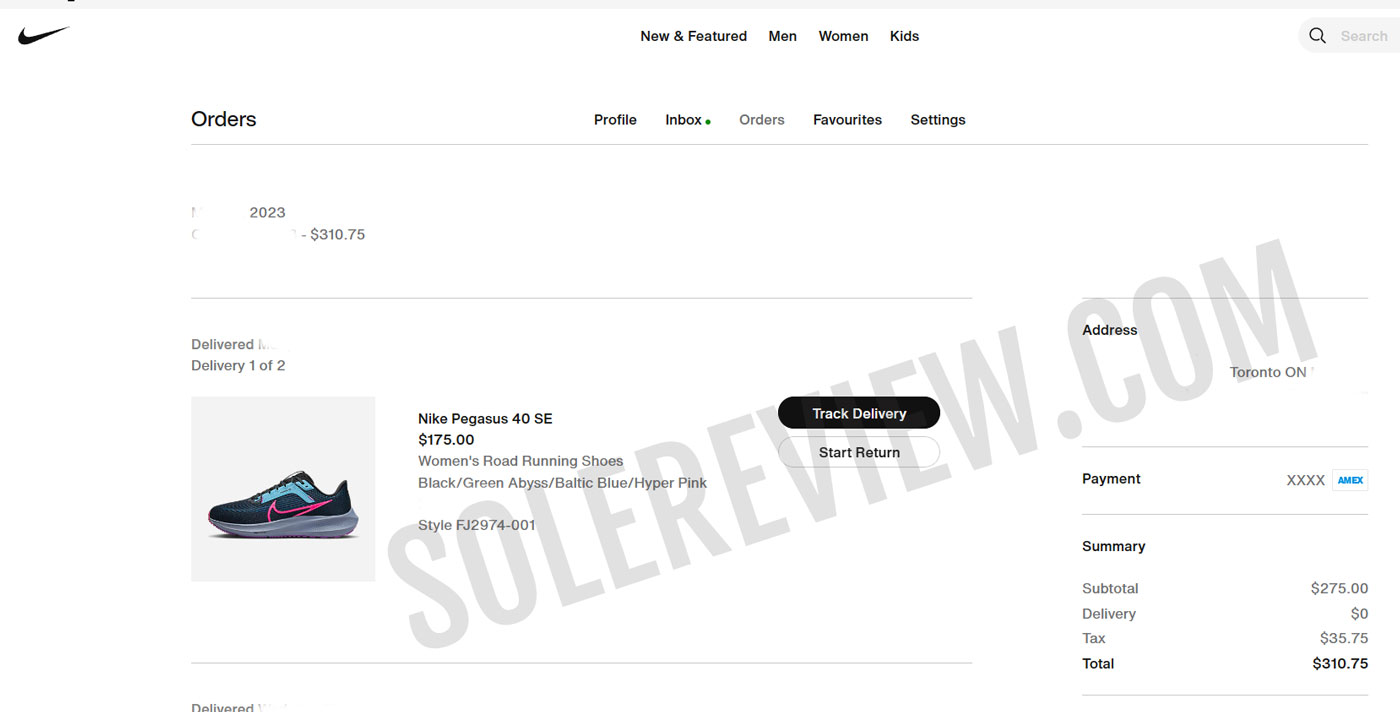
For this review, Solereview paid the full retail price for the Nike Pegasus 40. The amount is in Canadian Dollars. The invoice is for two pairs of shoes.
In this review:
SUMMARY AND VERDICT
Initially, we thought of going on a mini-rant about how Nike squandered the opportunity to celebrate the Pegasus’s 40 anniversary – by not launching a brand-new model instead of a re-bottled Pegasus 39 – which the Pegasus 40 happens to be.
Then we remembered that Solereview said the same thing about the Nike Pegasus 30 nearly a decade ago. The redesigned Pegasus 31 arrived the following year, so we assume that the Pegasus 41 will follow the same pattern.
Since we’re not going to repeat ourselves, there is very little else to say about the ‘new’ Pegasus. For all practical purposes, it’s the same shoe as the Pegasus 39.
For those who are not familiar with the Pegasus, it’s Nike’s do-everything running shoe.
While it’s not packed with the newest cushioning or upper tech, it remains a comfortable daily trainer. Its versatility suits everyday training at different speeds and distances, while also being capable of a half-marathon.
The ride quality is underwhelming. While the Zoom Air bags add some pep, they are firmer than the surrounding React midsole foam. Nike claims that the Nike Pegasus 40 has a ‘springy’ ride, but that’s not an accurate description of the ride behavior. Sure, there’s a brief pushback from the pressurized chambers when loaded, but that’s about it.
This observation doesn’t just apply to the Pegasus. The Asics Cumulus 25, Brooks Ghost 15, New Balance 880V13, and Saucony Ride 16 are all comparable trainers that use EVA-based midsoles with a relatively bland ride. Of all these shoes, the Asics Cumulus 25 offers the softest ride – if that’s what you’re after.
THE NIKE PEGASUS 40 COMPARED WITH PEGASUS 39
The Pegasus 39 and 40 use the same midsole and outsole, so the ride experience stays the same.
The minor tweaks on the upper only result in a minor difference to the overall fit. The midfoot fit is more supportive under the arch; the Pegasus 40’s internal panel hugs the underside of the foot better than the Pegasus 39 ‘s Flywire lacing system.
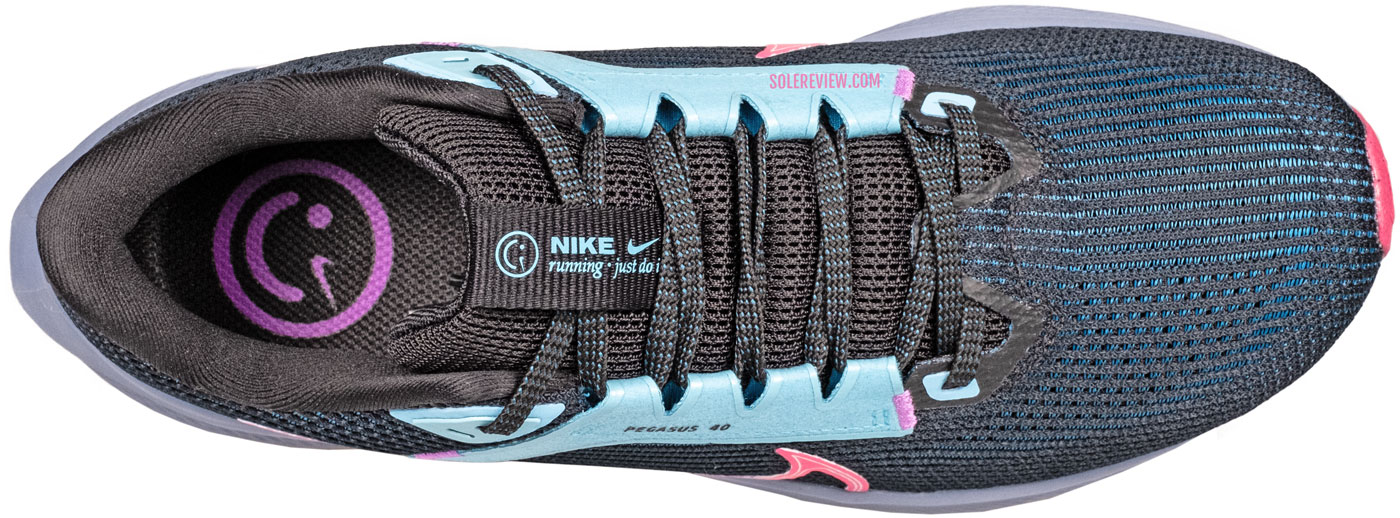
The Pegasus 40 now uses midfoot straps that are directly connected to the laces. No Flywire cords here.
Since the sleeve is made of a spongy spacer mesh, the new midfoot strapping system brings it closer to the foot. This makes the interior feel plusher than the Pegasus 39.
The lacing operation is also smoother, as the laces only need to pass through the loops instead of the eyelet+Flywire cords on the Peg 39.
The sizing is true to size, and the Pegasus 40 has a similar inner sleeve as the 39. The new Pegasus uses a different mesh and trims, but the fit is unaffected.
The retail price stays at $130. Since both versions are very similar, we don’t recommend upgrading. You’ll probably save money by getting the last year’s Pegasus 39 for less money.
THE MIDSOLE DESIGN AND RIDE EXPERIENCE
Cushioning the ride is the same React foam midsole with its front and rear Zoom Air bags – these are pressured chambers of gas with a drop-stitched design.
Together, they create a midsole ride that borders on firm, with Zoom Air contributing to a bit of pep. The Pegasus 40 is neither soft nor particularly ‘bouncy’ by today’s standards. Only the removable insole creates a thin layer of step-in softness.
Zoom Air’s drop-stitch construction is similar to inflatable SUP (stand-up paddle) boards or thin camping air beds, except that the pressure inside the Zoom Air bags cannot be customized.
The rear Zoom Air unit is layered with a firm cellulose board and foam lasting. The removable insole is the same as before – a blown foam footbed of standard thickness.
In the past, there was often a mismatch between the densities of the midsole foam and Zoom Air bag. If the foam was softer than the Zoom Air bag, then the outline of the pressurized chambers could be sensed under the forefoot.
But that’s a thing of the past, and Nike does a good job of matching the React foam and Zoom Air densities.
Unless you’re running in exceptionally warm weather, the Zoom Air bags blend in with the rest of the midsole. That’s the reason why the React midsole isn’t overly soft; its density needs to be closer to Zoom Air pressure to produce a cohesive ride character.
And why does the temperature make a difference at all?
React foam is sensitive to its external environment. If it’s below freezing, React foam turns firmer. Conversely, hotter days make it softer. That’s true for EVA-based foams as well, whereas advanced materials like adidas Boost, Nike ZoomX, and adidas Lightstrike Pro are mostly immune to ambient temperatures.
The other scenario where the sensory mismatch between Zoom Air and React might occur is when the midsole is heavily loaded.
For instance, a heavy runner may cause the softer part of the midsole (React foam) to compress more than the tightly-sprung Zoom Air. When that happens, the outline of the Zoom Air bag will be felt.
Under standard running conditions, the Pegasus 40 delivers a versatile ride experience.
The combined properties of the foam and Zoom Air midsole make the ride comfortable and transition-friendly. Despite the prominent flex grooves on the midsole, the pressurized Zoom Air limits the forefoot flexibility. The said lack of flexibility is also what makes the Pegasus relatively peppy.
The forefoot Zoom Air acts as a firm base for forward transitions, and adds substance to the cushioning. It’s not responsive or bouncy when compared to new-age materials, but the ride is snappier than standard EVA foam midsoles. If you own a pair of the New Balance 880V13 or Brooks Ghost 15, you’ll know what we mean.
There are many reasons why the Nike Pegasus has been commercially successful, and its versatile nature is one of them.
The midsole has enough pep to sustain 4:30 min/km (7:00 min/mile) speeds on the road or treadmill. It’s also comfortable enough for a half-marathon or long runs at easy speeds. It does okay as a road-trail hybrid. The Nike Pegasus 40 could very well be your one shoe to do it all.
It’s also very forgiving, thus making the Pegasus 40 an excellent beginner shoe.
Its 10 mm heel-to-toe drop doesn’t impede midfoot or forefoot striking. The rounded heel doesn’t catch on the ground, and the outsole covers all contact and loading points. A deep transition channel allows the midsole (and outsole) to articulate during the gait cycle.
The outsole traction is excellent; the colony of rubber tiny lugs and ‘ribs’ offer a dependable grip and help during forefoot transitions.
The ‘neutral’ midsole design was one of the Pegasus 39’s highlights, so if nothing has changed since then, do we need to repeat ourselves? Yes, because our understanding of what makes any shoe ‘neutral’ has evolved.

We took nearly 3,000 photographs of shoes during a marathon for a better understanding of running shoe behavior. At an average of 3.5 runners per frame, that’s nearly 10,000 shoes.
Earlier this year, we photographed nearly 10,000 shoes during a marathon (no hyperbole, this) to see how shoes behave under a wide range of bodyweight, angle of pronation, footstrike orientation, cadence, and pace.
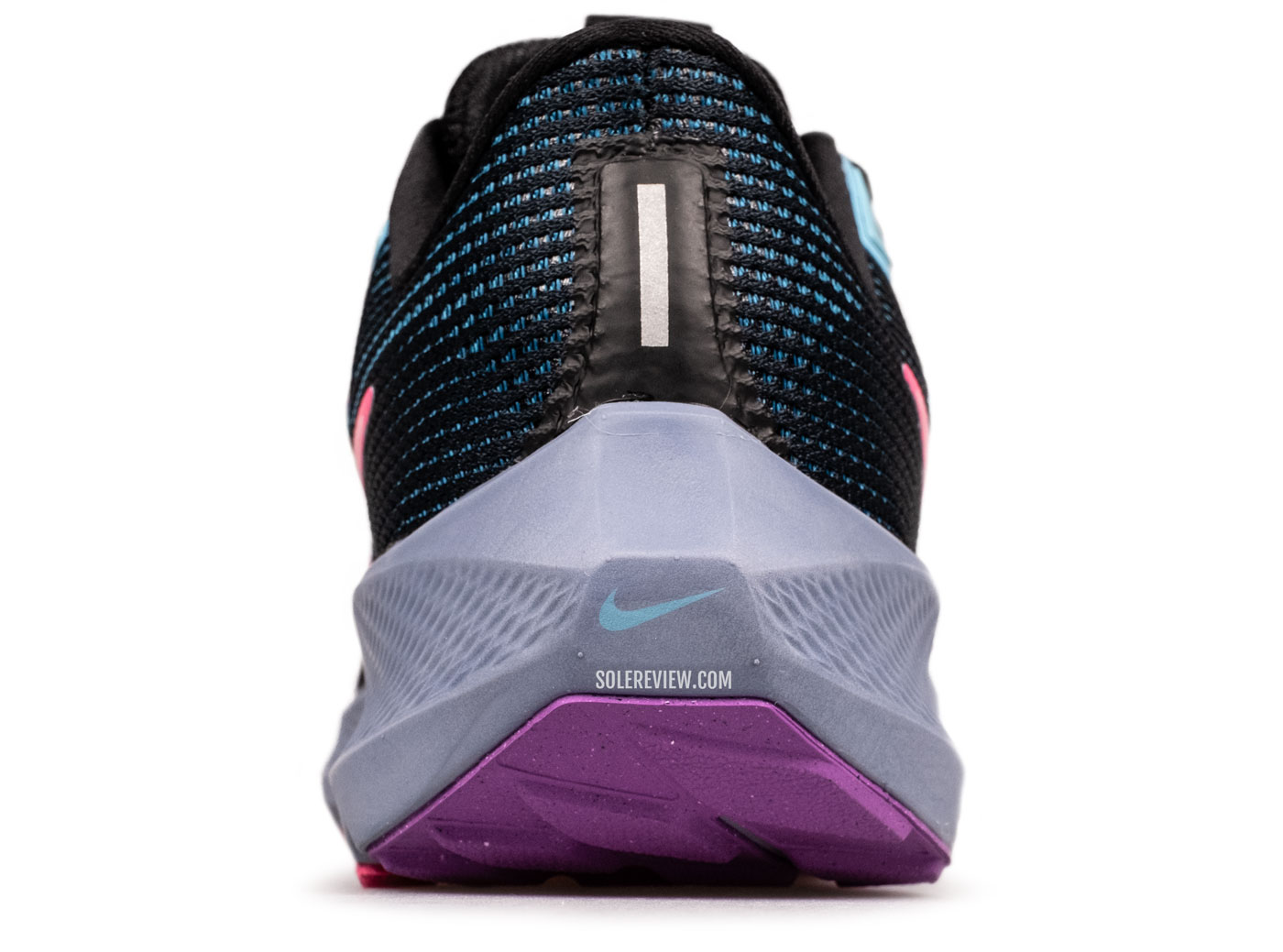
A midsole that appears ‘neutral’ may produce a different result, depending on the runner’s weight, speed, and angle of pronation.
One of the lessons was that a neutral-looking midsole may not necessarily translate to a neutral ride on the road.
A neutral running shoe, to us, is one without a cushioning bias. The midsole should resist excessive deformation on either side when loaded. While every foam midsole will deform when loaded (that’s how cushioning works), it should be uniform and not favor a particular side.
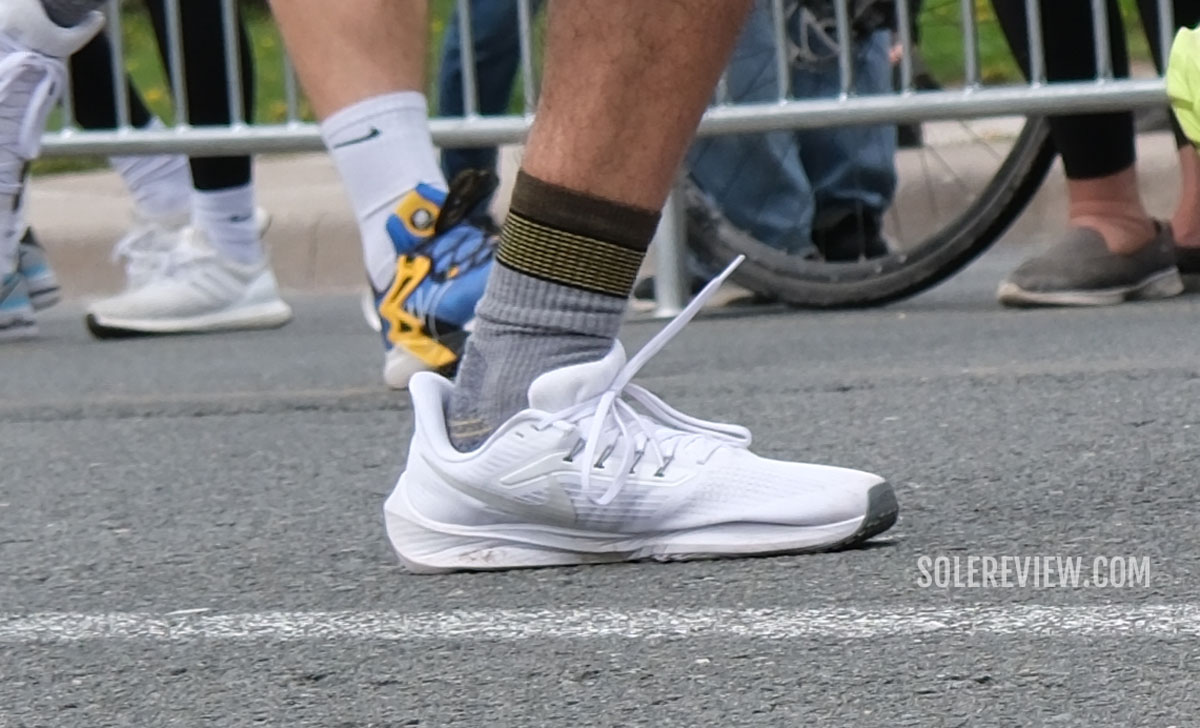
As seen here, a heavy runner (90 kgs/198 lbs+) could flatten the React foam during transitions. Under such circumstances, the stiffer Zoom Air bag will be felt under the forefoot.
The Nike Pegasus 40’s midsole is based on the same sole as the 39, so it will behave similarly during a run. These photographs show the midsole distortion under higher body weight and pronation angle.
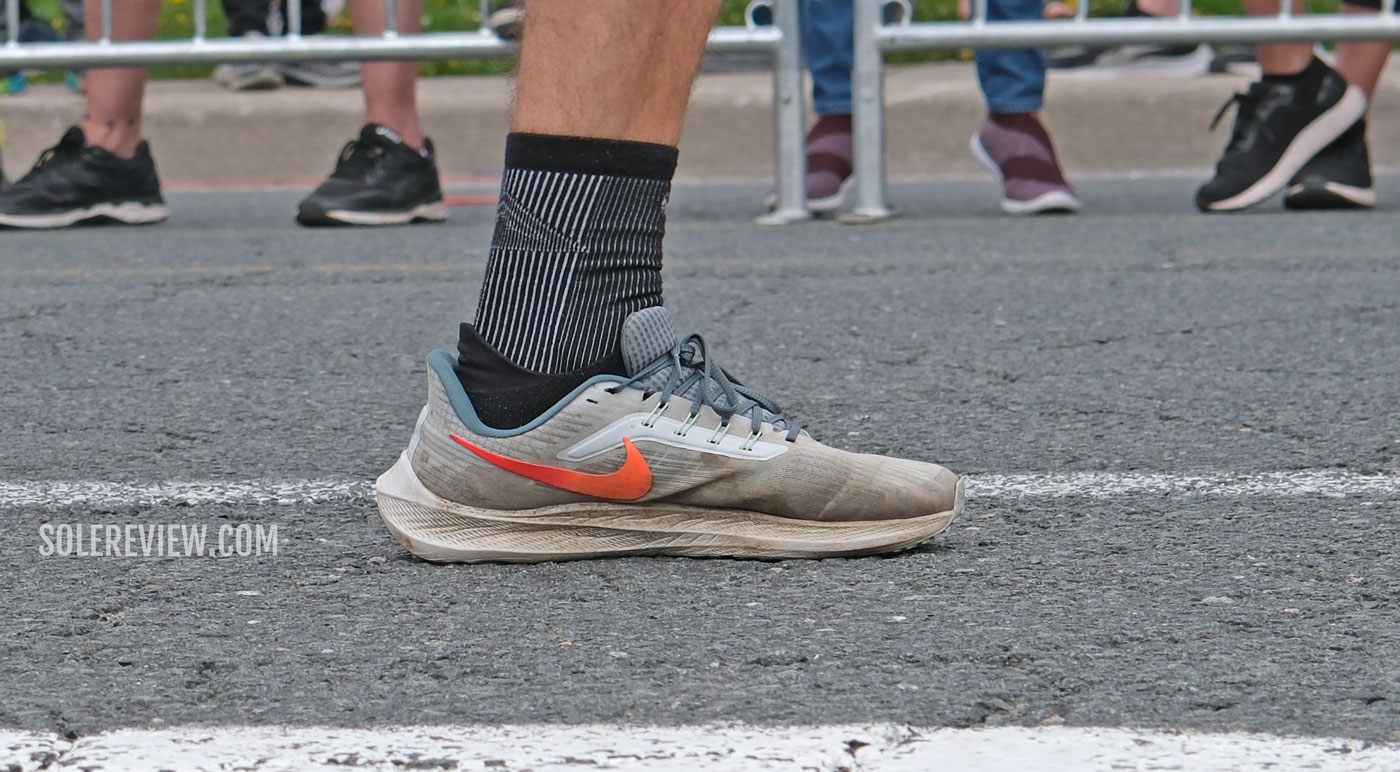
In this reference image of the Pegasus 39, the midsole (same as Peg 40) performs optimally under the standard running conditions – which is average weight + pronation angle.
On the other hand, the Pegasus 40 is well-behaved when used by runners lighter than 165 lbs/75 kg with a lower angle of pronation.
When viewed from the heel when stationary, the midsole design is very neutral. The sidewall design on either side appears ‘balanced’. However, the scooped design makes the midsole slim and lacking in support for heavier runners that have a higher angle of inwards roll.
So what’s the solution here? Add a medial post? Not at all. A firmer foam wedge under the arch – aka the medial post – was originally invented to compensate for poor midsole materials in the 1970s and 80s. A neutral trainer with a wide and somewhat firm base will be supportive enough for most runners.
In other words – any stability feature like a medial post prevents the shoe from collapsing rather than offering a true motion control benefit.
Many neutral trainers like the Brooks Ghost, Brooks Glycerin 20, and Saucony Ride 16 manage their midsole compression extremely well. A firm and wide midsole is a shared trait across these three shoes, so the outcomes are similar.
On a related note, marketed stability tech like the Brooks ‘Guiderails’ appear to add no value. The base Glycerin and Ghost will do just fine.
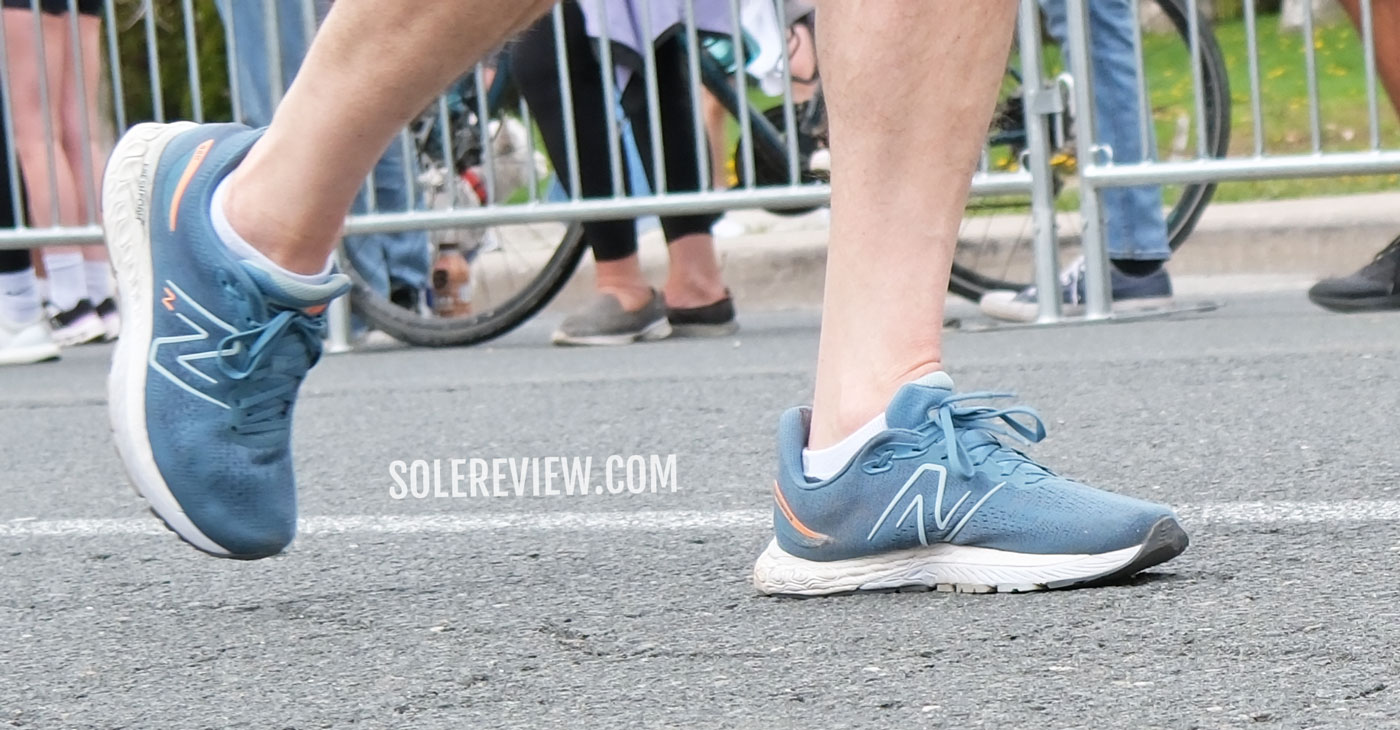
New Balance 880’s midsole during loading. There’s a fair bit of compression happening during rearfoot striking.
Surprisingly, the New Balance 880 also fails to manage its midsole compression during heavy heel strikes. This is a perfect example of the variance between the static (published) heel drop and the active (loaded) heel drop.
We hope the next iteration of the Pegasus provides a wider or more supportive base – a good example is the Nike Structure 24. Ideally, we’d like to see a few design elements borrowed from the Zoom Fly – like its wide and supportive midsole platform.
RECOMMENDED ROTATION
Owning the Nike Vaporfly 3, Pegasus 40, and Streakfly will set you up nicely for different use cases.
The Vaporfly 3 or Nike Zoom Fly 5’s carbon-plated midsole offers responsive comfort during marathons, whereas the Streakfly does well for runs of shorter durations.
Other rotational alternatives are the Saucony Endorphin Speed 3 (or Pro 3) instead of the Vaporfly. Road racers such as the adidas adios 8 and Asics Hyper Speed 3 are also excellent for short races.
And if you’re missing the Reebok Run Fast Pro, consider the Saucony Sinister – a hyper-light running shoe with a Pwrrun PB (PEBA) midsole. Just know that the Sinister has a very narrow fit, so the Nike Streakfly will be a better choice for a more relaxed interior.
IS THE NIKE PEGASUS 40 DURABLE?
For most runners, the Nike Pegasus 40’s functional lifespan will be 450 miles or more.
The outsole design and rubber compound has served the Pegasus 39 well, so a similar outcome should be expected of the 40. The midsole’s cushioning retention will also likely be trouble-free.
The fully sleeved construction of the upper adds durability through the structural reinforcement.
THE UPPER DESIGN AND FIT
Let’s kick off with the basics. The upper fits true-to-size with a just-right interior volume and toe-box ceiling. The forefoot, midfoot, and heel create a secure fit with no slippage.
As with the Pegasus 39, the upper is notched under the first row of lacing to prevent the mesh from gathering when flexed. This was a problem on the Pegasus 38 from a couple of years ago.
An internal sleeve lines the midfoot and the toe box, so this isn’t merely a partial gusset. Both the inner and outer upper are non-elastic, and the inner sleeve uses a spongy spacer mesh.
Nike offers an extra-wide sizing for runners with broad feet.
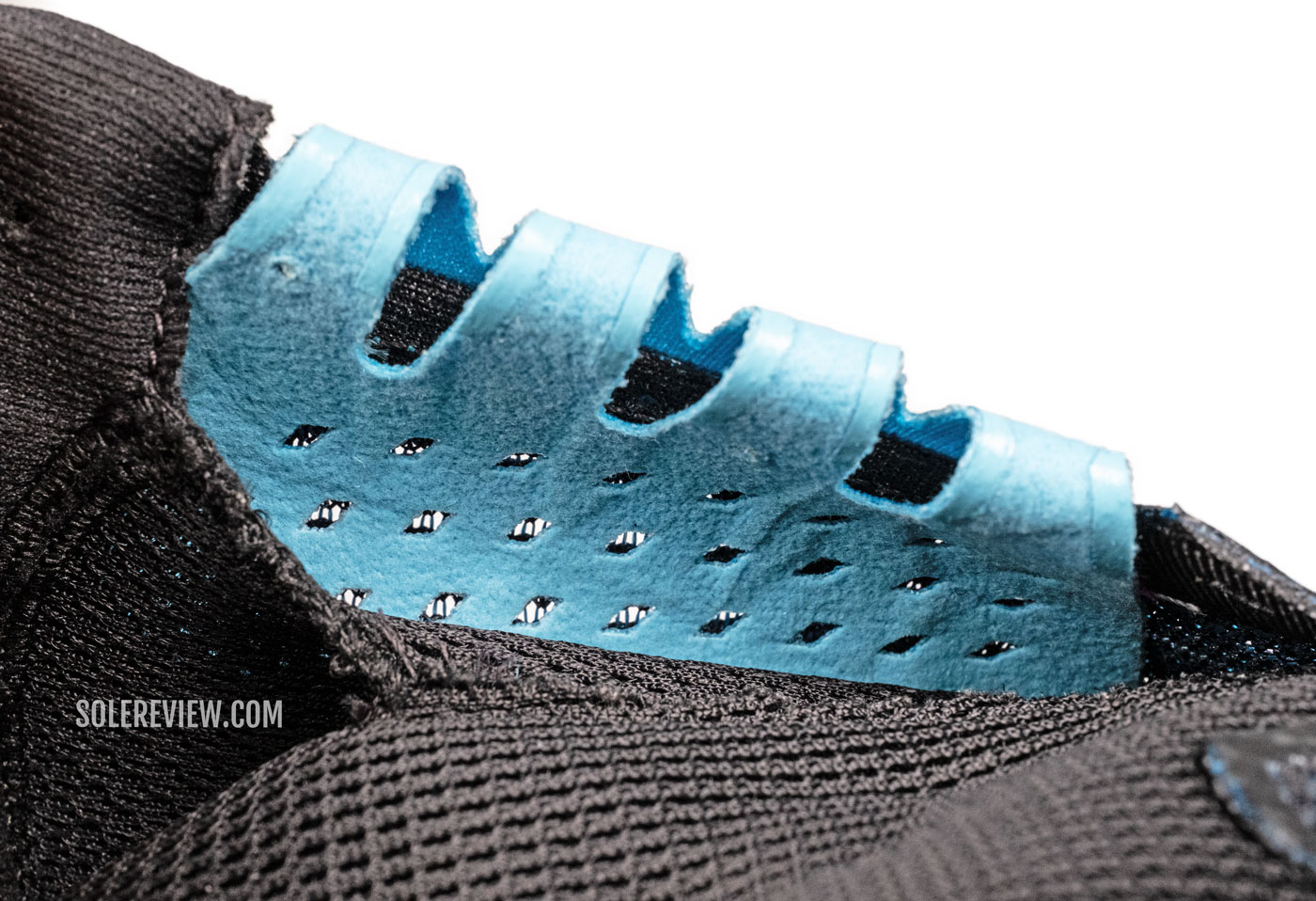
The lacing is linked to an internal midfoot strap system. The fit is more conforming and consistent than the 39. The synthetic suede panels are perforated for ventilation.
The Pegasus 40 improves on the Pegasus 39’s fit by replacing the Flywire cords with a midfoot strapping system. The loops bring the inner and outer midfoot panels closer than the 39, thus lowering the lacing pressure by a notch.
The upper is also easier to lace up than the 2022 Pegasus.
The midfoot panels are directly connected to the laces, so cinching the shoe also brings the upper closer to the foot. This leads to a better ‘wrap’ around the midfoot than the 39.
While the Pegasus 39’s Flywire cords also did a fine job with securing the midfoot, the upper felt snugger at the top when compared to the sides. The Pegasus 40’s midfoot fit feels uniform from the base to the top of the upper.
Looks can be subjective, but the small aesthetic touches on the upper elevate the overall design.
The synthetic suede lacing panel has a certain depth to it, and the embroidered tacks in a contrasting color provide a visual pop. The updated midfoot design also lends the Pegasus 40 a more compact appearance when compared to the 39.
The last two eyelets are reinforced with a rubberized overlay. The laces are the same as the last time – flat and non-stretchy.
There’s another upside to the midfoot strapping system. The inner sleeve is made of spongy space mesh, and extends from the midfoot to the toe-box.
The internal panels do a better job of pushing the spongy mesh against the foot, so the Pegasus 40’s midfoot feels plusher than the 39. Other than that, the sleeve and lining are the same as before.
Like any running shoe with a full inner sleeve, the ventilation is average. Though the top layer doesn’t obstruct airflow, the inner sleeve makes puts the Pegasus’s ventilation below par.
For example, a shoe like the Saucony Ride 16 or Brooks Ghost 15 breathes better than the Pegasus 40. The positive side is that the average ventilation levels make the Pegasus 40 a capable three-season running shoe. Runs during mild winters, for example, do not pose a problem for the double-layered Pegasus.
The Pegasus 40 lacks practical reflectivity, so we’ll have to rely on the upcoming ‘Shield’ version for a high-visibility upper. There’s a tiny strip of reflectivity on the heel, but that’s like not having any.
ORTHOTIC COMPATIBILITY
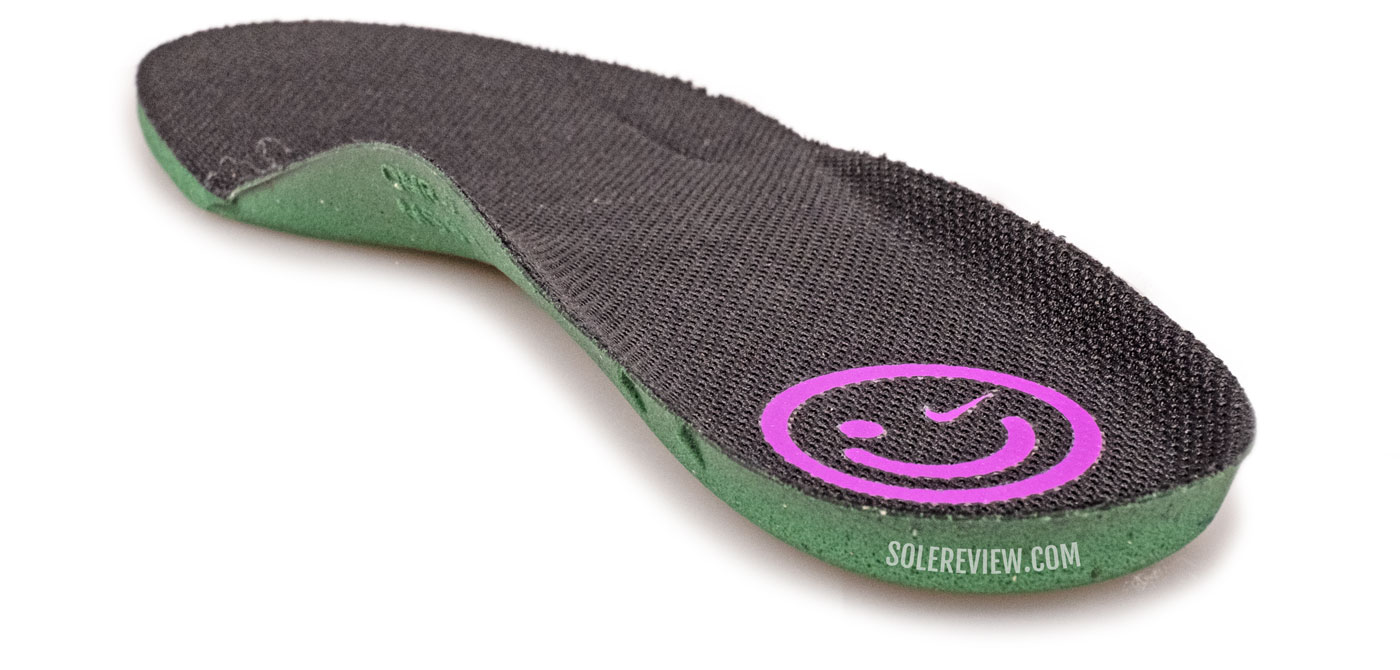
The supplied footbed isn’t very thick, so be mindful when replacing it with an orthotic. A thicker insole will alter the quality of fit.
The Pegasus 40’s footbed has a standard thickness, so it will accommodate orthotics of a matching profile.
Aftermarket insoles with a thick heel will struggle to find a home inside the Pegasus 40. A bulky orthotic will make the fit tighter as well as affect the heel fit.
PROS AND CONS
There’s a good reason why the Nike Pegasus has been around for four decades. It’s got such a well-rounded character, be it the just-right midsole firmness, outsole grip, or secure upper.
It’s comfortable enough for half marathons and durable enough to withstand frequent wear.
Like the last few versions, the Pegasus 40’s cushioning is temperature dependent. Running in below freezing hardens the React firm, with the opposite also being true.
The Pegasus 40 also lacks functional low-light visibility – that tiny strip on the heel doesn’t count.
COMPARISON: THE NIKE PEGASUS 40 COMPARED WITH PEGASUS TURBO
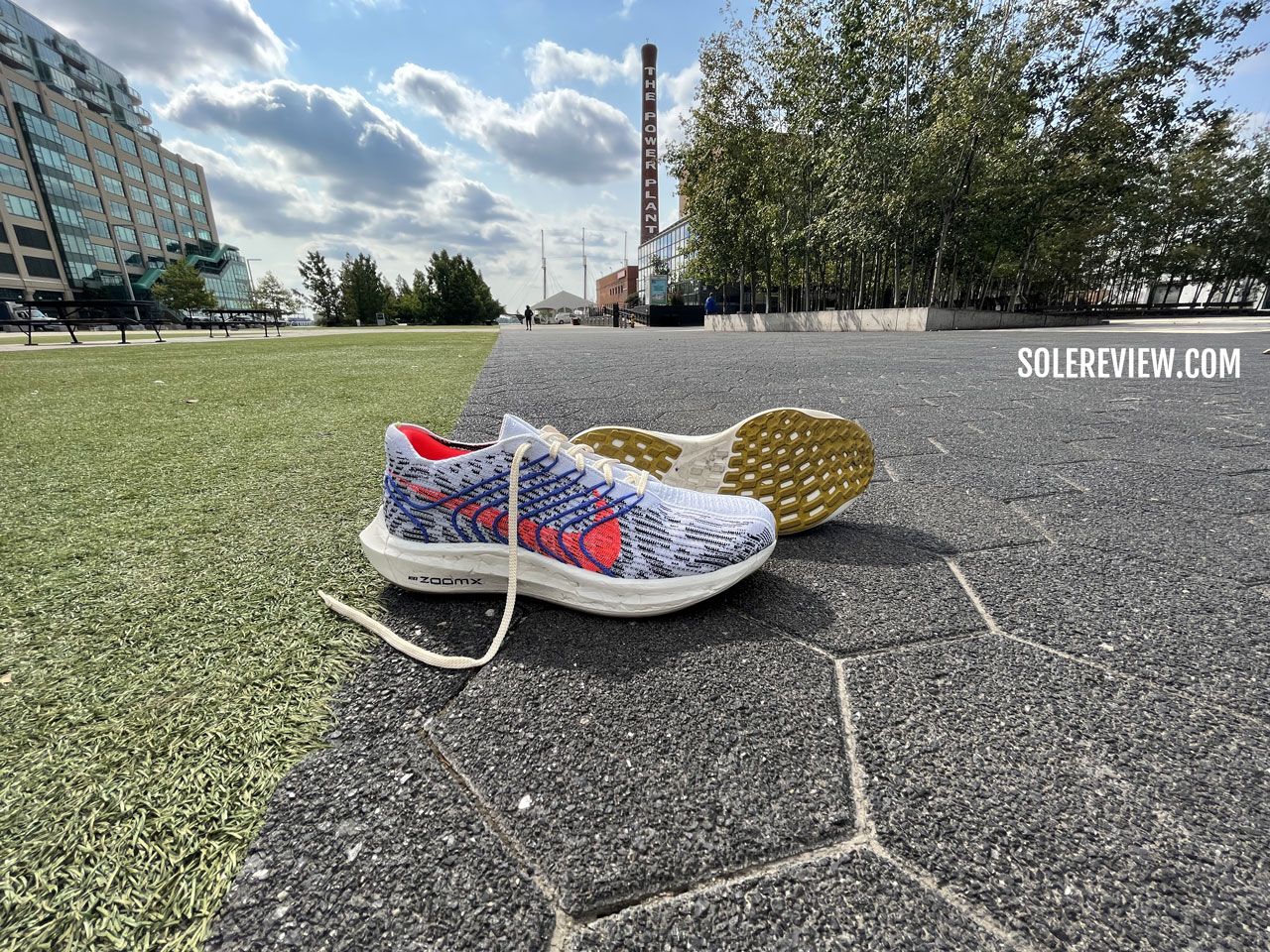
Despite the similar name, the Pegasus Turbo is a very different product than the namesake Pegasus 40.
The Pegasus Turbo and Pegasus 40 have nothing in common except for the name.
The Turbo uses a completely different upper with a stiffer feel, whereas the recycled ZoomX foam midsole is much softer. Unlike the Peg 40, the Peg Turbo doesn’t use Zoom Air or React foam.
While the Pegasus Turbo is a comfortable trainer for the road, our review didn’t think much of the upper and single-density midsole. It wasn’t the ‘Turbo’ we hoped it to be.
What made the first and second Pegasus Turbo so good was the dual-density midsole with a conforming upper fit.
The firmer React base helped with quick transitions, whereas the softer ZoomX core made the ride comfortable. The tight upper kept the foot locked down over the midsole for a more efficient power transfer. None of these qualities exist on the Pegasus Turbo Next Nature.
We recommend the Saucony Tempus instead of the Pegasus Turbo. It combines a PEBA foam (Pwrrun PB) core with a supportive EVA frame and rocker midsole. Even though there’s no plate, it’s comfortable and quick enough for a marathon.
SHOES COMPARABLE TO THE NIKE PEGASUS 40
The Nike Pegasus 40 is one of the many everyday trainers that compete for shelf space within the $120-140 price segment.
Brooks sells its Ghost 15 – a running shoe for daily runs with medium-soft cushioning and traditional ride quality. It’s not the most responsive or lively, but it’s a stable running shoe that’s comfortable enough for up to a half marathon. The New Balance Fresh Foam 880 V13 is also comparable to the Brooks Ghost.
For a softer ride, consider the Asics Cumulus 25. It’s a watered-down Nimbus 25 that uses a soft Flytefoam Blast+ midsole, but minus the visible Gel pads from the last year’s model.
The firmer cushioning of the Saucony Ride 16 and Asics Novablast 3 make them better suited for faster speeds (4:30 min/km, 7:00 min/mile) than the alternatives listed here. They’re still very comfortable, so the midsole has sufficient cushioning for up to a half-marathon.
Do you own this shoe? Improve this review by sharing your insights.

